Better Sailing
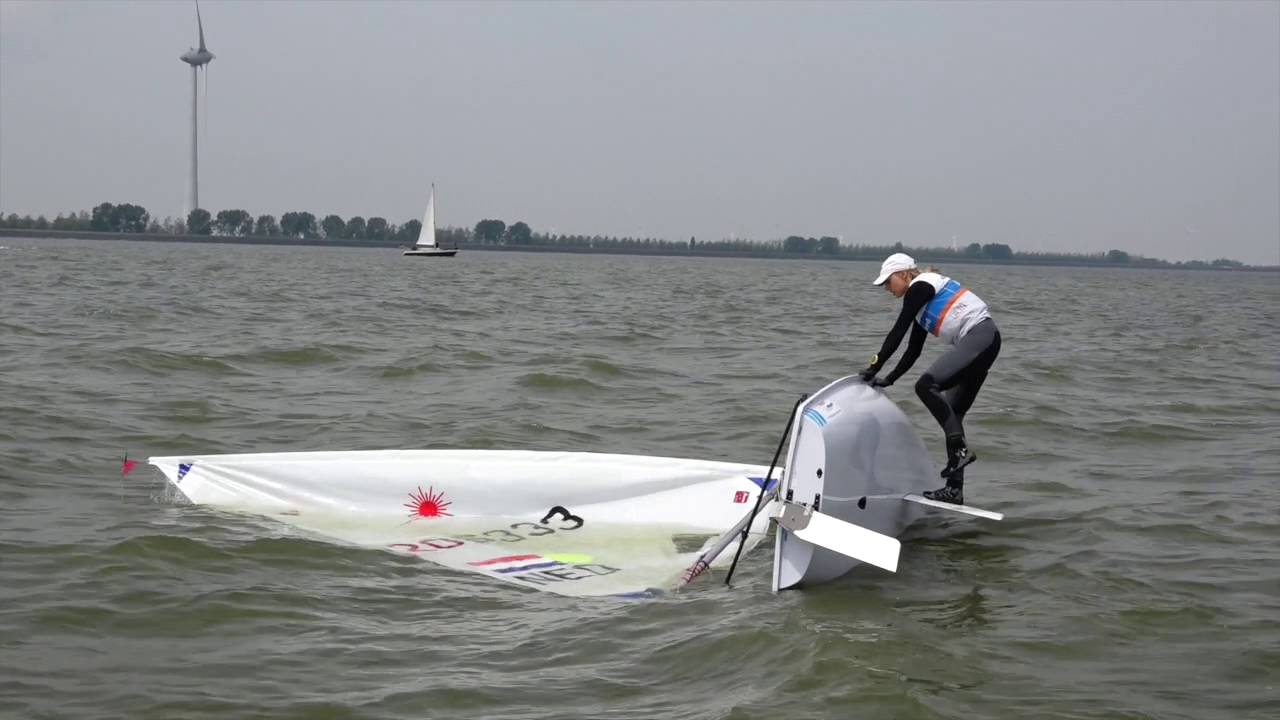

How to Right a Capsized Sailboat
Capsize is the term used when a Sailboat is tilted at a 90º angle or turned over in the water. It has something to do with the movement of the crew weight or excess weight concentrated on the wrong side of the boat. It can also be due to too much power in the Sail.
In this section, learn how to avoid capsizing or deal with a small capsized sailing Dinghy :
How to Avoid Capsizing
- Familiarize yourself. Keep in mind that Capsizing is very common when sailing a small boat. This fact can make you prepared. Know the different situations where Capsizing becomes inevitable. Getting familiar with the causes can help you in avoiding them as you go afloat. It is wise to know the things you need to do if the boat capsizes. In protected waters with good conditions, practice dealing with a capsized boat. Get familiar with the steps to do to make the boat upright again. Make sure that you wear a Life Jacket. It will be better if you have someone on another boat to give assistance when necessary.
- Know your limitations. Sail within the limits of your skills and ability to respond to situations. Knowing how to make the boat upright when sailing a Dinghy or small boat is very crucial. If you do not know how to deal with a capsized boat, sail on a more stable one. Small Keelboats and other types of Dinghies are more stable and less likely to capsize. For obvious reasons, do not go afloat if the conditions are not favorable for Dinghy Sailing.
- Know how to reef a Dinghy. A Dinghy becomes easier to handle in strong Winds if it is reefed. Reefing, or reducing the Sail Area, is an important skill to learn. Knowing how to properly adjust the Sail area of a Dinghy while on the water can help you in keeping it upright.
- When Sailing Downwind Place crew weight astern and keep the boom down.
- When Sailing Upwind Place crew weight to windward. Slightly raise the Centerboard or Daggerboard to decrease the Heeling effect. Take control of the speed of the boat. It is more likely to capsize if it heels and slows down.
Knowing the causes of Capsizing will help you in avoiding it. In the event that your boat capsizes, do not get embarrassed. Having a capsized boat is not something to be ashamed of. Many sailors have their own share of experiences in getting their Dinghy capsized. The important thing is that you learn from the experience.
Methods of Righting a Capsized Boat
Dealing with a Capsized boat generally depends on the size of the Sailboat and on what circumstances you are sailing in. Wind and wave conditions at that particular time should be taken into consideration.
Here are some Techniques in Righting a Capsized Boat:
- Release the mainsheet and tiller and climb towards the opposite side.
- Climb over the top gunwale (top edge of the side of the Hull). Step over the sidedeck to reach the Daggerboard.
- Stand on the part of the Daggerboard nearest to the Hull and hold the gunwale.
- Pull the boat upright. Climb back to the boat as soon as it is upright again.
- Scoop Method The heavier person rights the boat by standing on the part of the Centerboard nearest to the Hull to pull the boat upright. The other person is scooped aboard. His weight will prevent the boat from another Capsizing once it is upright. In this method, release the mainsheet and jib sheets in order for the Mainsail to wave loosely when the boat is upright again.
- Walkover Method As the boat capsizes, you and your crew member should climb over the opposite side of the boat to reach the Centerboard. Climb back into the boat as soon as it is righted.
- Traditional Method Turn the boat in such a way that the Mast is downwind or the bow is pointed into the Wind. The first person should stand on the Centerboard, while the second crew member keeps the boat into the Wind. From the Stern, the first person boards the boat and helps the other crew member onboard.
- Righting an Inverted Boat The buoyancy distributed on the bottom and sides of the Hull makes a lot of Dinghies more at risk to turtle (turn completely upside down). In this situation, the Centerboard will likely to slip back into its case. When this happens, stand on the opposite gunwale and pull on a jib sheet or fixed righting line and lean out. Bring the boat to its horizontal or capsized position. Do the suitable Righting Technique to make the boat upright.
In recovering a Capsized boat, ensure that you and your crew (if you are sailing with another person) are safe at all times. Wear a Life Jacket afloat and remember to stay with or near the boat when it capsizes.
How to Right a Capsized Sailboat – Conclusion
Do not be embarrassed if your boat capsizes. In general, getting wet because your boat capsized is both a learning and fun experience. This is actually a good way to teach you several important skills in boat handling and techniques on how to deal with different situations.
Peter is the editor of Better Sailing. He has sailed for countless hours and has maintained his own boats and sailboats for years. After years of trial and error, he decided to start this website to share the knowledge.
Related Posts

Atlantic vs Pacific: Which is More Dangerous for Sailing?

Why Do Sailboats Lean?

How Does a Boat Sail Upwind? Unveiling the Mechanics of Against the Wind Sailing

How Does Sailing Work? The Physics of Sailing
- Buyer's Guide
- Destinations
- Maintenance
- Sailing Info
Hit enter to search or ESC to close.
Boat Reviews
- Boats Specs
- Marine Pros
- Boat Insurance
- Boat Warranties
- Boat Transport
- Boat Towing
- Marine Forecasts

Your Ultimate Boating Resource

A Guide to Recovering from a Sailboat Capsize

Sailboat capsizing can be a frightening experience, especially for inexperienced sailors. But understanding how to recover from a capsized boat is part and parcel of sailing. This guide will walk you through the steps of recovering from a sailboat capsize, as well as some tips to ward off such an incident.
Why Capsizes Occur
Capsizing can take place for different reasons, including sudden gusts of wind, choppy seas, or when the captain loses command of the boat. Most often capsizes result from several factors combining forces, like abrupt changes in wind direction, unequal weight distribution among crew members, or improper sail trimming. It’s essential to remember that capsizing is typical when navigating small boats or while learning to sail. Knowing the proper techniques for recovery is integral to your growth as a sailor.
Principles of Survival After Capsizing
If you capsize, don’t panic. This is only a bad thing if it delays your decision-making and preparation, or makes you entirely unprepared for what is to come. Here are some principles to follow that will ensure your survival
Remain Collected
Fear is a natural response to being thrown into the sea, but it’s essential that you keep your composure. Panic will cloud judgement and make it more difficult to think rationally.
Check for Survivors
The most pressing task after a capsized boat is to guarantee everyone has returned to safety. Take count and make sure everyone has something to cling onto or can be hoisted onto the hull of the boat.
Treat Injuries
Examine the scene to look for any injuries that may have occurred. Provide the necessary medical attention. Ask for help if you need to.
Don Life Jackets
Everyone should don their life jackets if they haven’t already done so. Securely attach them, ensuring they are adequately fitted and provide enough buoyancy.
Stay with the Boat
Unless the boat is sinking or irreparably damaged, stay with the vessel as opposed to attempting to swim to land or another vessel. Rescuers can much easier spot a capsized boat than separate swimmers.
Rescuing the sailboat
Make sure everyone is medically treated and cared for, prepare the boat for rescue. Ensure that everyone is securely positioned. Watch for your belongings as you get the boat ready.
Unfurl the Sails
Release and slacken all sails to prevent a recurrence of capsizing while raising the boat. Keep your head low!
Climb Aboard
Taking position on the leeward side of the sailboat, locate the centerboard or dagger board. Depending on the boat, it might need to be pulled out manually. Climb onto and use your body weight to leverage your craft back up.
Lift Her Up
Lean back against the board and aim to bring the top of the mast from beneath the raging waves. Kick your legs in an effort to generate additional force as you slowly raise her into a standing position. Hurry aboard afterward.
Bail Out All Water
Boats tend to accumulate water in their cockpit after capsize. Utilize a bucket or manual pump to remove as much of this liquid as possible for stability and control. Ready yourself for reclaiming what was once yours: The sea.
Avoiding Disaster
To ensure your thrilling sailing adventures remain safe, remember these tips:
Master Your Art
Savage the elements with skill and finesse. Enhancing your knowledge of how your boat performs in different winds and waves will equip you to handle tricky situations and dodge capsizing.
Keep Watch for Wind Shifts
Anything from a light breeze to a fierce gust can change the course of events in an instant. Monitor the wind direction and speed, being wary when turbulence increases.
Distribute Weight Wisely
The right balance of crew weight is key for steering clear of disaster. Keep it low and centered inside the vessel and be on the ready, able to shift when necessary.
Equip Yourself for Safety
Invest in flotation devices like masthead balloons and righting lines, so if the worst happens, you can count on them to help restore control fast.
When the waves churn and your vessel is overturned, you can take comfort in knowing that the art of recovery is a skill that comes with practice. Don’t let panic overtake you; view every capsizing as an opportunity to hone your abilities on the open seas. With bravery and ambition, you can make the most of any sailing voyage.
RELATED ARTICLES
2024 pursuit os 445: an overview, dock your boat smoothly this summer with these tips, the billionaire’s playground: where to spot superyachts around the world, summertime snack ideas for your boating adventure, de-winterize your boat the right way with these professional tips, latest posts, don't miss, our newsletter.
Get the latest boating tips, fishing resources and featured products in your email from BoatingWorld.com!
What type of wood is used for pier pilings?
What is the difference between a dock and a floating pier, what is the proper technique for pulling a beginner wakeboarder, what does ‘no wake’ mean on a lake, what is the difference between wash and wake, 10 essential tips for fishing near private property, the benefits of using a drift sock: guidance for anglers, lure fishing: secrets for imitating live bait and attracting fish, explore the untapped depths of america’s best bass fishing spots, tackle your catch-and-release adventures with these 6 tips, outboard motor maintenance: tips for keeping your engine in top shape, the essential boat tool kit: tools every boater needs, diy boat building: 8 tips and tricks for building your own vessel, the art of miniature maritime craftsmanship: ship in a bottle, antifouling paints: a guide to keeping your boat shipshape, beginner’s guide to standup paddle boarding: tips and techniques, boating for fitness: how to stay active on the water, kayak safety: how to stay safe on the water, anchoring in a kayak or canoe: how to secure your small boat, 2024 aquila 47 molokai review, 2024 sea-doo switch 13 sport review, 2024 aspen c120 review, 2024 yamaha 222xd review, 2024 sailfish 316 dc review, 2023 seavee 340z review, 2023 centurion fi23 review, gear reviews, megabass oneten max lbo jerkbait review, fortress anchors fx-7 anchoring system review, fortress anchors fx-11 anchoring system review, fortress anchors commando anchor kit review, fortress anchors aluminum anchors review, stay in touch.
To be updated with all the latest news, offers and special announcements.
- Privacy Policy
Capsize Recovery: How to Recover a Capsized Sailboat
If you didn’t already know, capsizing refers to the overturning of our boat in the water. And unfortunately, it’s one of the leading causes of boating injuries and fatalities. There are many reasons why your sailboat might capsize. Overloading, improper anchoring, unsafe boat handling, and inclement weather, to name a few. But is it possible to prevent it from happening? And if it does, can you recover a capsized sailboat? Keep reading to learn how to recover a capsized sailboat, prevention tips, and disaster instructions.
What to Do If Your Boat is Capsizing
Capsizing is an incredibly dangerous (and equally frightening) experience. When it’s happening, it’s hard to think clearly. However, you can follow these steps to ensure the safety of yourself and your crew: 1. Wear Lifejackets Every passenger needs to have access to a lifejacket or PDF . Before the boat fully overturns, try to distribute improvised floatation gear (like seat cushions). 2. Account for Your Passengers Once in the water, visually and/or verbally account for all your passengers. Check for physical injuries, and make sure everyone has the proper safety equipment. 3. Find Help The next step is to look for help. If there are boats nearby, try flagging them down. If not, you might be tempted to swim to shore. If you’re further than 50 meters away, we strongly advise you to resist the urge. In those circumstances, you are safest staying with the boat. Try righting it, or you could climb onto the overturned hull to conserve energy (and escape the cold water). 4. Recover the Capsized Sailboat Use the traditional or scoop method to right your capsized sailboat if you’re able. Unsure how to do that? Don’t worry; we have detailed instructions down below. 5. Use a Distress Signal if Necessary If you are struggling to find help, you can use a distress signal. Most boats are equipped with distress flares, lights, and/or flags.
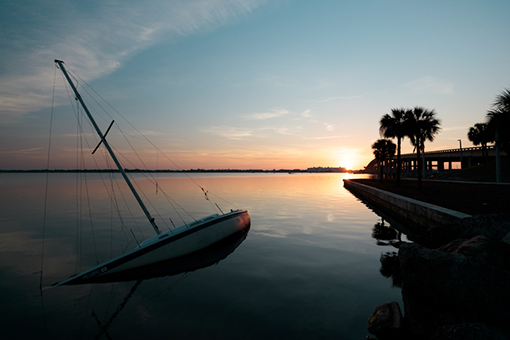
How to Recover a Capsized Sailboat
Once the boat has flipped, most sailors will attempt a sailing capsize recovery. While there are several different ways you could go about this, here are our top recommendations: The Traditional Method Hence the name; this method is the most common way to recover a capsized boat. Begin by positioning the boat, so the mast is downwind (meaning the bow is pointed into the wind). Then, have one crewman stand on the centerboard (ideally, this crewman should be the heaviest of the bunch). Next, they should use their leverage to work the boat back upright. If the boat is in a turtled position, the masthead is fully submerged beneath the water. It might take multiple crew members to right the boat. The Scoop Method The scoop method is another terrific option that can be used when multiple people are on board. It involves the lighter crew member swimming to the boat’s leeward side, lying in the bilge, and hugging one of the cockpit’s fixtures. Then, the heavier boater will stand up on the part of the centerboard nearest to the hull. As the heavier boater stands, the boat will be pulled upright. The lighter boater will be scooped aboard, and their weight will prevent the boat from re-capsizing. Note: To properly perform the scoop method, release the mainsheet and jib sheets. This allows the mainsail to wave loosely once the boat is righted. The Walkover Method The walkover method is slightly different from the rest, as it is performed while the sailboat is actively capsizing. It requires the boaters to walk/climb over the opposite side of the boat toward the centerboard. The hope is that their redistribution of weight will prevent the capsize from continuing once it’s begun.
Read Next: How Sails Work - Sailing in Different Wind Conditions
How to Prevent Your Boat from Capsizing
Overloading your boat is one of the leading causes of capsizing. Therefore, capsize prevention can be as simple as respecting your boat’s weight limit and evenly distributing the weight. Overloaded or imbalanced boats sit lower in the water. Therefore, this puts them at greater risk of being overtaken by rough water or wakes. You should also avoid boating in bad weather whenever possible. While many boaters believe they’re untouchable, a sudden squall can tip even large boats. For this reason, you should be extra cautious if caught in an unexpected storm. Turn your boat at controlled speeds and steer the bow directly into any oncoming waves.
Final Thoughts
We hope this article provides insight into how to recover a capsized sailboat. If you’re interested in more boating safety articles and how-to guides, check out our resources page .
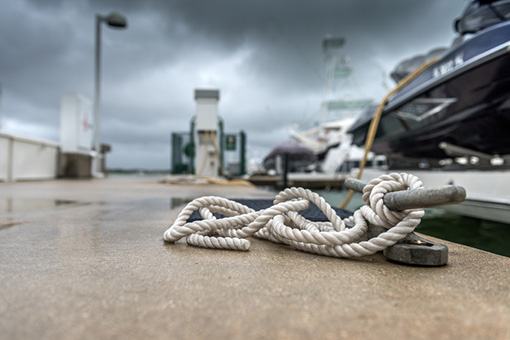
Join Our Newsletter!
Get community news, buying bargains, and how-to guides at your fingertips.
Capsizing: Essential Tips for Prevention and Survival
Capsizing is a phenomenon that occurs when a boat or ship rolls on its side or turns upside down due to various factors, such as wave action, instability, or wind force. This can lead to devastating consequences for the vessel, its crew, and any passengers on board. Capsizing has been a critical focus throughout maritime history for engineers, sailors, and emergency responders alike in an effort to understand the causes, develop safety measures, and minimize the risks associated with this potentially fatal event.

Understanding the factors that contribute to capsizing is essential in order to take preventative measures and promote safety at sea. The stability of a vessel is a crucial element in determining its susceptibility to capsizing, and the type of vessel can play a significant role in how it reacts to external forces
. Additional factors such as weather conditions, the skill of the crew, and how a vessel is loaded also contribute to the likelihood of capsizing. By examining past incidents and learning from them, it is possible to develop strategies to mitigate the risks involved with capsizing and help prevent future occurrences.
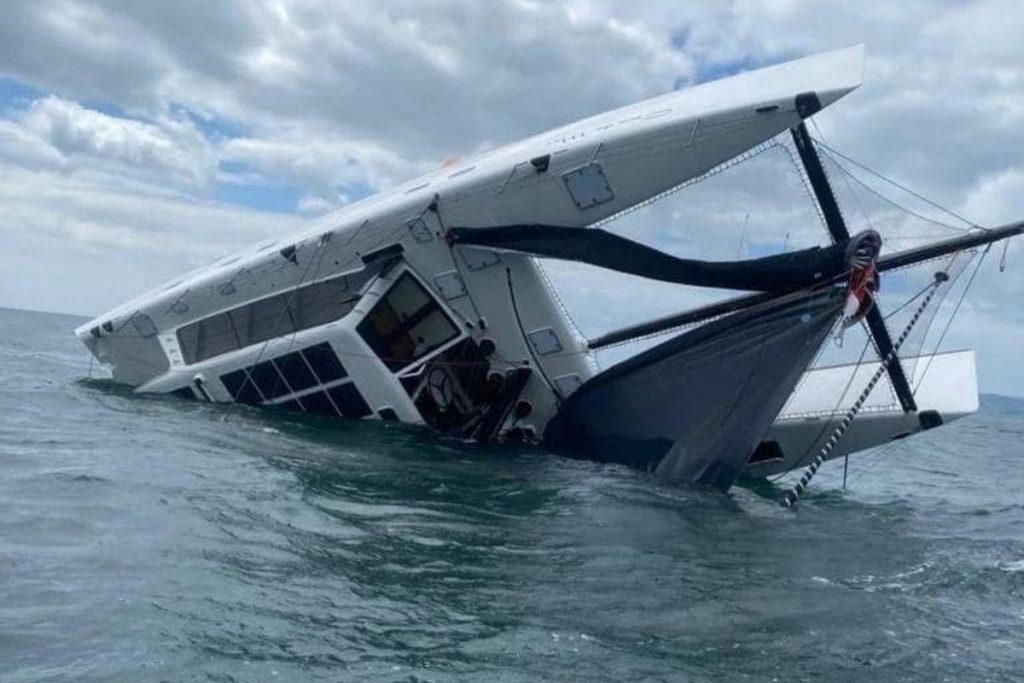
Key Takeaways
- Capsizing involves a boat or ship rolling on its side or turning upside down, often with severe consequences
- Stability, vessel type, and external factors such as weather conditions can influence the likelihood of capsizing
- Examining past incidents allows for the development of preventative measures and improved safety at sea.
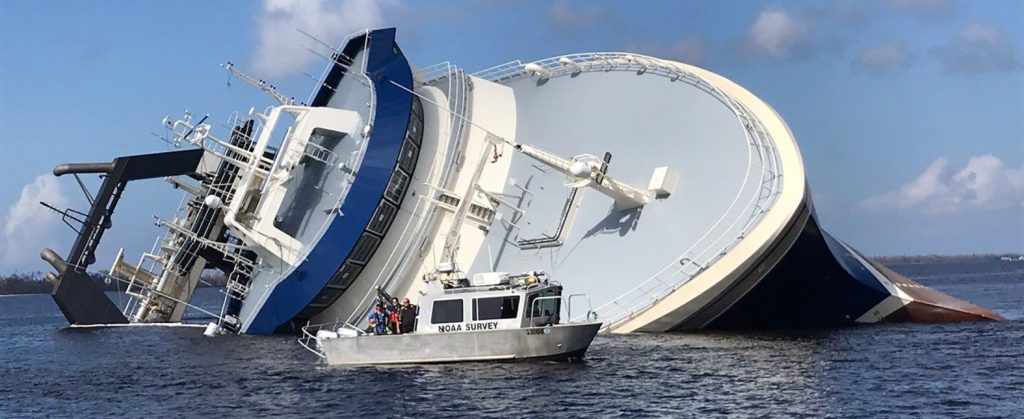
Understanding Capsizing
Capsizing refers to the process of a vessel, such as a boat or ship, overturning and ending up upside down in the water. This sudden and often violent event can occur due to a variety of reasons, including rough weather, improper loading, or operator error. When a vessel capsizes, it can pose a significant danger to sailors, crew members, and passengers on board.
There are different factors that might contribute to capsizing. One common cause is improper weight distribution . When there is an uneven distribution of weight, the stability of the vessel can be compromised, leading it to capsize . It's essential that load is evenly distributed during the process of loading the vessel to ensure its stability while on water.
The crew's movement on the boat can also impact stability; hence, it's crucial to maintain proper weight distribution throughout the journey.
Capsizing can also be a result of environmental conditions such as waves, wind, and water currents. Severe weather conditions, including heavy storms and high winds, create rough seas, which can make it difficult for a vessel to maintain stability. For example, large waves or strong winds can push a boat or ship beyond its angle of positive static stability , causing it to overturn in the water.
Another potential factor in capsizing is operator error . Inexperienced or careless boat handling can lead to situations where a vessel may overturn due to abrupt directional changes, navigating in rough waters, or failing to account for the vessel's limitations.
To mitigate the risk of capsizing, it's essential to understand and respect the vessel's limits and capabilities. Proper maintenance and operation, understanding weather conditions, and regular evaluation of the vessel's stability through factors such as loading and weight distribution can help to ensure a safe and enjoyable time on the water.
In the event of a capsize, the priority is to ensure the safety of all passengers and crew and to attempt to right the vessel . Precautionary measures, including life jackets and emergency plans, should be in place to deal with such situations effectively.

The Science of Stability
Vessel stability is a critical factor in ensuring the safety of ships and their crew. It refers to a vessel's ability to maintain balance and maintain its upright position despite the forces acting upon it, such as waves and wind.
A basic principle governing a vessel's stability is the relationship between its center of gravity (G) and the metacentric height (GM). The metacentric height is the distance between the center of gravity and the metacenter (M), a point where the line of action of the buoyant force intersects the vessel's centerline. A higher GM value indicates better stability, as the vessel is less likely to capsize.
External factors, such as waves, can significantly impact a ship's stability. In beam seas, for instance, waves striking the vessel's sides at a 90-degree angle can induce roll motion. This roll motion can lead to potential capsizing events if the oscillations become too large, surpassing the vessel's designed stability limits.
Wind forces are another aspect to consider when analyzing a ship's stability. The wind's effect on a vessel's sail area or superstructure can cause a heeling force, pushing the vessel to one side. This, in turn, could result in a loss of stability if the vessel's GM value is not sufficient to counteract these forces.
In summary, a vessel's stability is determined by a complex interplay between its center of gravity, metacentric height, and the forces acting upon it, such as waves and wind. Ensuring that a ship is designed to withstand these forces is critical to maintaining its safety at sea.
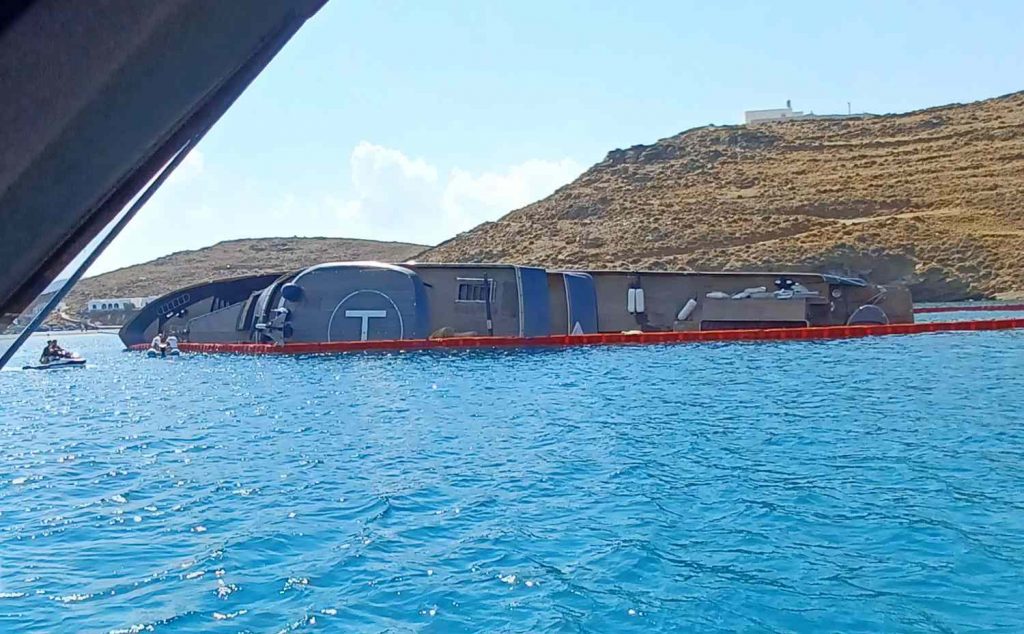
Factors Leading to Capsizing
Capsizing is a dangerous event that can affect various types of boats, leading to loss of life and property. Several factors contribute to capsizing, and it is crucial to understand and minimize these risks for a safe boating experience.
One leading factor in capsizing is the speed of the vessel. High-speed boats can capsize when turning too fast, causing the boat to lose balance and tip over.
Excessive speed may also result in loss of stability, particularly in smaller boats, due to the motion of the water. It is essential to maintain appropriate speeds and remain vigilant in observing speed limits and water conditions.
Load distribution plays a significant role in maintaining a boat's stability. An unbalanced weight distribution can cause a ship to become unstable and overturn. Overloading is another significant concern, as it adds unnecessary weight to the vessel, lowering its center of gravity and increasing the risk of capsizing. Proper weight distribution and adhering to loading guidelines are crucial for avoiding capsizing.
Weather conditions, such as storms, heavy rain, and strong winds, can greatly influence a boat's stability. In particular, smaller boats are more susceptible to capsizing due to weather elements.
Large waves and rough water surfaces can cause boats to become unstable and eventually capsize. It is vital to monitor the weather forecasts and avoid venturing into the water with unfavorable conditions.
Collisions are another potential cause of capsizing. A boat's stability may be compromised when it collides with another vessel, an underwater object, or even a large wave. In cases of collision, the impact force can cause the boat to lose its balance and capsize. It is crucial to maintain a safe distance from other watercraft and objects while navigating the waterways.
In conclusion, various factors, including speed, load distribution, overloading, weather conditions, and collisions, can lead to capsizing. By being aware of these risks and taking necessary precautions, boaters can enjoy a safe and enjoyable time on the water.
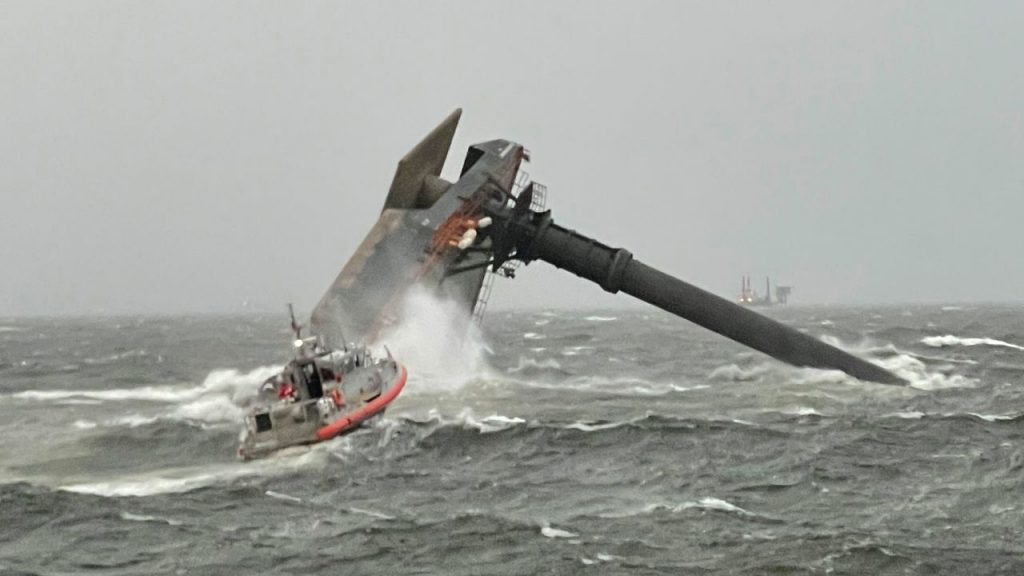
Types of Vessels and Their Susceptibility
Boats and ships differ in size and purpose, which affects their susceptibility to capsizing. Generally, smaller vessels like canoes , kayaks , small dinghies , and lifeboats are more prone to capsizing due to their lower stability and higher sensitivity to wind and waves. However, even larger vessels like ferries and sailboats can experience capsizing if certain conditions are met, such as imbalance of weight, equipment damage, or human error 1 .
Canoe and kayak capsizing is usually caused by paddler inexperience, strong currents, or unpredictable water conditions. Staying low in the vessel and maintaining good balance can significantly reduce the risk of capsizing in canoes and kayaks 2 .
Sailboats and ferries are exposed to higher wind forces due to their larger sail area or superstructure. These forces can create a significant heeling moment, which can lead to capsizing if not properly managed 3 . For sailboats, this can be mitigated by adjusting the sails or mast angle. Ferries, on the other hand, can benefit from modern stability systems and regular maintenance checks to minimize the risk of capsizing 4 .
Small dinghies and lifeboats have a higher risk of capsizing due to their smaller size, lighter construction, and vulnerability to waves or wakes from passing vessels. These small vessels should be operated with caution, especially in rough or crowded water conditions 5 .
Speedboats , which are designed for speed and agility, may also be susceptible to capsizing if not operated properly. Factors such as sharp turns, excessive speed, or sudden changes in direction can result in instability, potentially leading to a capsize 6 . Operators of speedboats should always prioritize safety and stay within the vessel's operating limits to prevent such incidents.
In conclusion, the susceptibility of different vessels to capsizing varies depending on their size, design, and operational conditions. By understanding these factors and operating all types of watercraft with care, the risk of capsizing can be effectively reduced.

Safety Measures and Survival
Capsizing of large vessels can lead to life-threatening situations, making it crucial to implement safety measures and adopt survival techniques. From the moment of capsizing, the priority is always the safety of the crew and passengers . The captain or a designated crew member should assess the situation and evaluate the risks, determining the best course of action based on the severity of the capsizing.
One critical aspect of safety is ensuring that all members on board are equipped with personal flotation devices (PFDs). PFDs help reduce the risk of drowning and make it easier for survivors to stay afloat while awaiting rescue.
In some cases, vessels may be designed to self-right, where the natural buoyancy and design of the boat enables it to return to its upright position following a capsize. However, many boats, particularly small recreational crafts, do not have this capability. Crew and passengers should be familiar with capsize recovery techniques such as those involving the use of paddles, ropes, and other flotation devices.
Lifeboats play a critical role in the survival of crew and passengers. Properly maintained and equipped lifeboats provide a safe and secure means of escape. Regular drills should be conducted to ensure familiarity with the process of launching and boarding lifeboats.
Communication channels also become crucial during such emergencies. A vessel or its survivors should establish contact with the Coast Guard or other rescue units through radio calls or other signaling devices, including flares and EPIRBs (Emergency Position-Indicating Radio Beacon).
In addition to implementing adequate safety measures, it is essential to stay informed about potential causes and warning signs of capsizing. By understanding the risks and limitations of boat design and stability , crew and passengers can practice proactive safety measures and be prepared for emergencies. This includes ensuring proper loading, avoiding overloading, and carefully navigating through adverse weather conditions.
Overall, enacting a comprehensive set of safety measures and remaining knowledgeable about capsizing risks can significantly increase a crew's chances of survival during such emergencies.
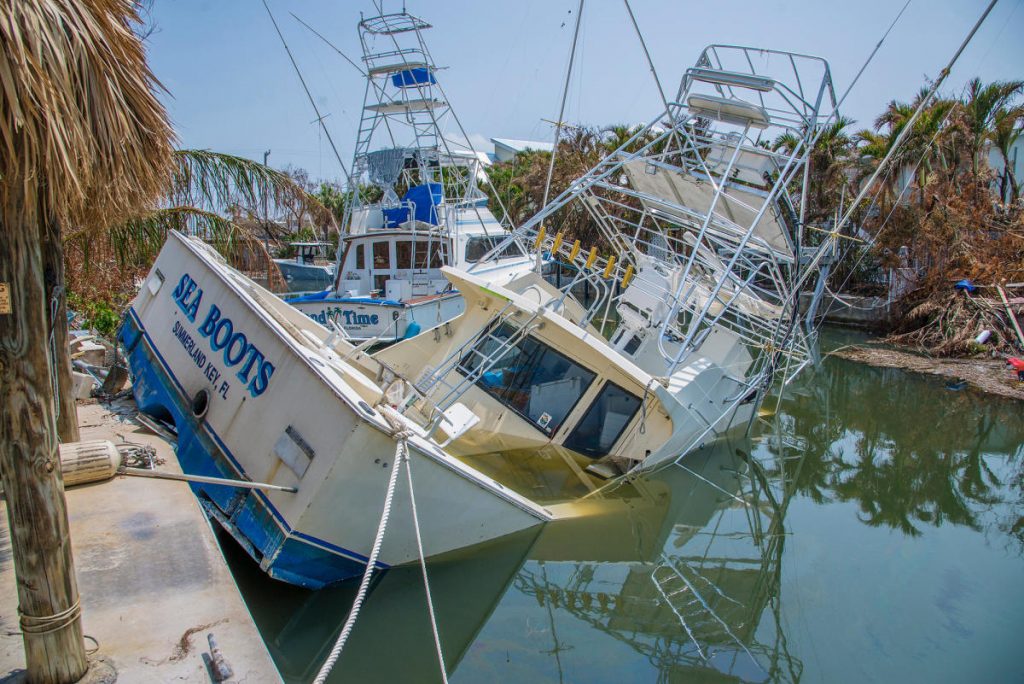
Notable Capsizing Incidents
In recent years, there have been several capsizing incidents, some of which have resulted in significant loss of life and damage to the vessels involved. One such incident was the capsizing of the Costa Concordia , a cruise ship carrying over 4,000 passengers and crew, which ran aground off the coast of Italy in 2012. The disaster led to the deaths of 32 people and required a complex salvage operation.
Another example is the Golden Ray, a cargo ship that capsized off the Georgia coast in 2019. The incident was caused by incorrect calculations about the vessel's stability, resulting in more than $200 million in damage. The salvage operation for the Golden Ray, which began in 2020, is ongoing.
Capsizing can also be particularly tragic when involving vessels transporting migrants. For instance, in the Mediterranean Sea, numerous overcrowded boats carrying migrants have capsized, resulting in hundreds of fatalities. These disasters highlight the dangers faced by migrants attempting to reach Europe on unsafe vessels.
The Seacor Power, a lift boat, capsized off the coast of Louisiana in April 2021 during a storm. At the time of the incident, the boat had 19 people aboard; six were rescued, one was found dead, and 12 more went missing. The incident raised concerns about safety regulations and vessel design in the offshore energy industry.
In summary, capsizing incidents can result from a variety of factors, such as incorrect stability calculations, overcrowding, and severe weather conditions. They often lead to significant loss of life and damage to the vessels involved, highlighting the need for improved safety measures and vigilance when operating or traveling on any vessel at sea.
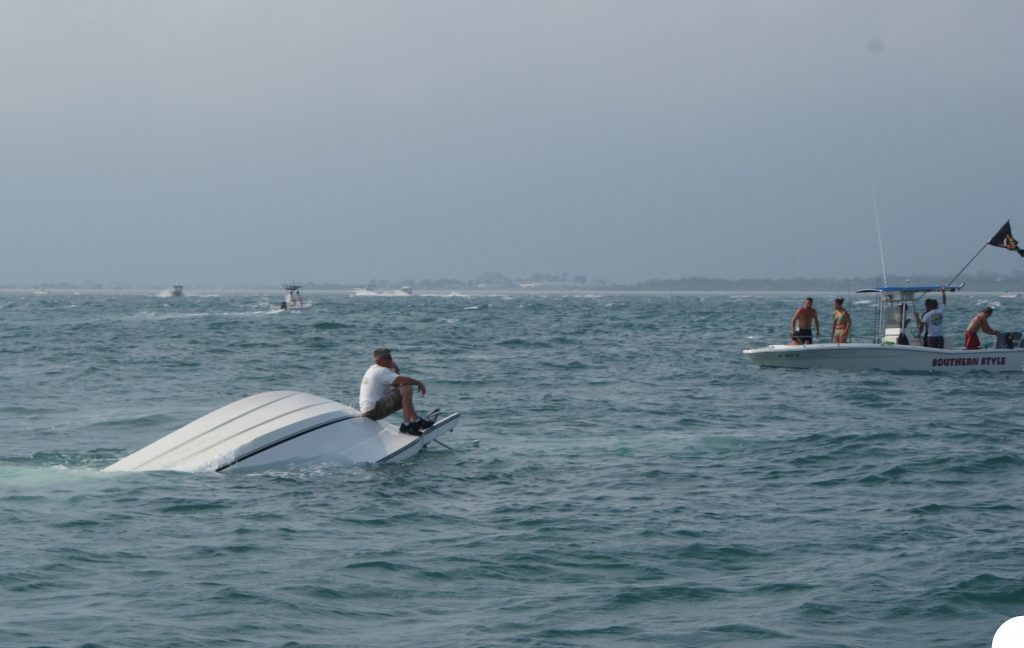
Capsizing in Context
Capsizing refers to the act of a boat or ship overturning, usually accidentally, while on water. It is a term commonly used in the maritime industry and is an essential concept to understand when discussing boat safety. Capsizing can be both a transitive verb, "to cause to overturn," and an intransitive verb, "to become upset or overturned" as defined by the Merriam-Webster dictionary .
The term "capsid" is unrelated to capsizing. Capsid is a term in biology, referring to the protein shell surrounding a virus's genetic material. The correlation between the term "capsid" and "capsizing" is only phonetic, and they have entirely different meanings and applications.
When discussing capsizing in Spanish, it is vital to use the appropriate adjectives and terminology. In this language, capsizing is referred to as "volcar" or "zarandear," and proper usage will ensure clear communication among Spanish-speaking individuals in the maritime industry.
In the study of language and linguistics, corpora play a significant role in understanding word usage and context. Corpora are large collections of written and spoken texts, which help researchers analyze language patterns. The Cambridge Dictionary cites capsizing as "to ( cause a boat or ship to) turn upside down by accident while on water", providing an example of the term's usage in context.
Cambridge University Press, one of the world's leading academic publishers, is a valuable resource for materials related to capsizing and maritime safety. The institution's extensive collection of publications offers valuable information and insights on the subject, which contributes to a deeper understanding of the nuances and importance of capsizing as a topic.
When using the term "capsizing" in any language or context, it is crucial to apply it accurately and with proper understanding. Through the study of linguistics, dictionaries, and academic publications, the importance of clear communication and accurate language usage can be emphasized, ensuring that maritime safety and knowledge are upheld to the highest standards.
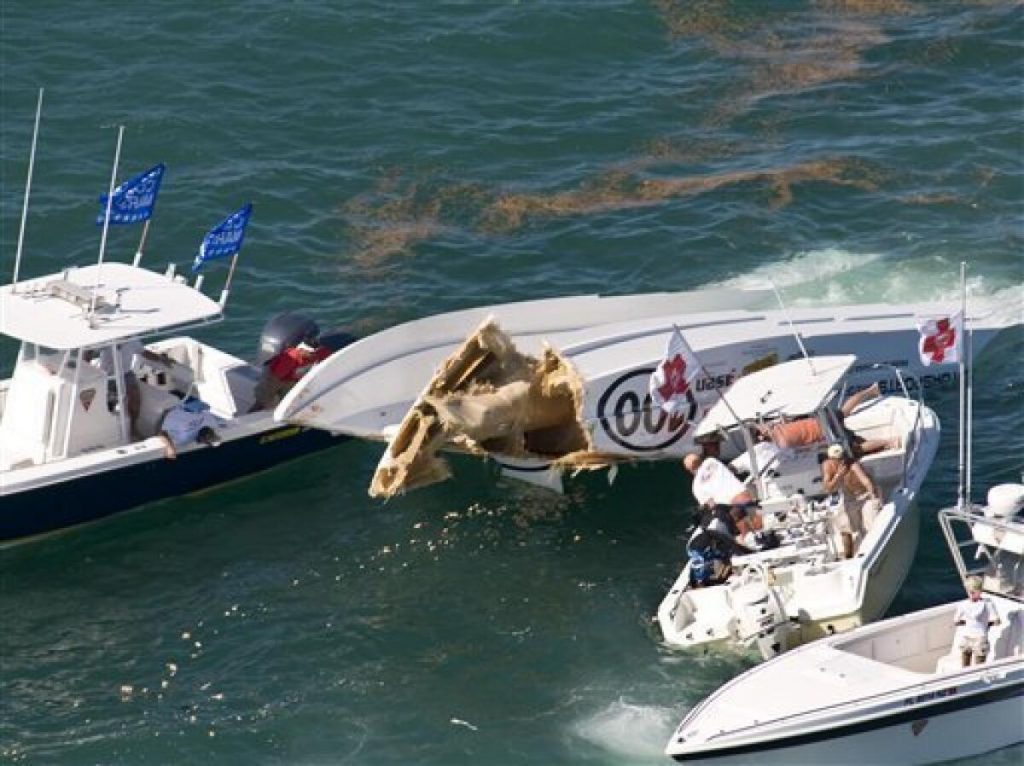
Preventing Overturns
One of the most critical factors in preventing capsizing or overturning of a boat is understanding and maintaining the vessel's stability. A stable boat has a low center of gravity, which helps it to stay upright even in challenging conditions. Both the design of the hull and the placement of objects within the boat, such as passengers, cargo, and equipment, significantly impact stability.
To maintain actual stability, it is essential to avoid overloading your boat. Distribute the weight in the boat evenly, not only from port to starboard but also from bow to stern and throughout the hold , ensuring the vessel is properly balanced. Overloading or uneven weight distribution can cause the boat to tilt, making it susceptible to pitch and capsize when navigating through waves or during sudden maneuvers.
The deck should be cleared of any unnecessary or loose items that could shift or slide during operation, creating an imbalance in the boat. Make sure that any storage compartments or tanks are secured, as their unexpected movement can also impact your boat’s stability.
When operating a boat, it is essential to be mindful of the conditions on the water. Waves or wind can dramatically affect your boat's stability, mainly if your vessel has a high deck or a raised center of gravity. Keep an eye out for unexpected changes in weather and be prepared to adjust your navigation as needed.
In case your boat flips and becomes a turtle, meaning it turns upside-down, your best chance of survival is to stay calm and prepare to exit the vessel as quickly and safely as possible. Orient yourself to the surrounding water and find your way to the surface.
Lastly, make sure you are familiar with your boat's capabilities and limitations. Each vessel is designed differently, affecting its overall stability. Know your boat's specific features, such as the design of the hull , deck , and bow , along with its recommended passenger and cargo capacities, to ensure a safe and enjoyable experience on the water.
By following these guidelines and understanding your boat's design and stability, you can significantly reduce the risk of capsizing or overturning, ensuring a safe and enjoyable boating experience for everyone onboard.
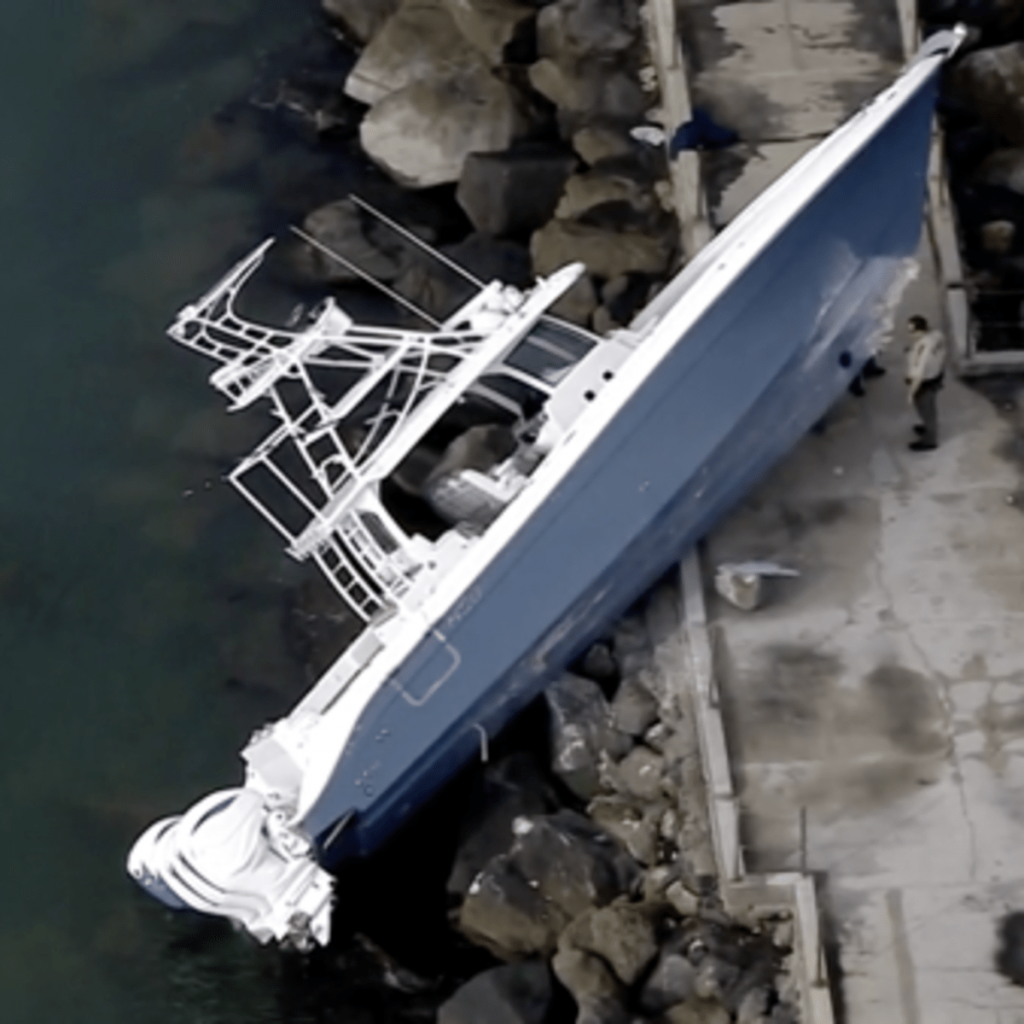
The Aftermath of a Capsize
When a capsize occurs, coping with the immediate consequences is crucial for the safety of those onboard. In most cases, passengers will find themselves submerged with the overturned vessel, so finding an exit and locating life jackets becomes a priority. It's important to remember that the port (left) side of a sailboat should still be accessible even if the vessel is overturned.
Once the crew is safely out of the capsized sailboat, assessing the situation is the next step. While some capsized vessels may be salvageable and can be righted, others might be beyond saving, already sinking or even sunk. In such cases, the emphasis shifts to finding rescuers and staying afloat until help arrives. Maintaining communication with the shoreline or nearby boats can be a challenge, but leveraging any available radio equipment or flares can make a significant difference.
Capsized vessels are generally investigated by authorities in order to determine the cause of the incident. In some cases, search and rescue operations may continue for several days, as documented by news reports . The US Coast Guard and local marine services often work in tandem to conduct search and rescue missions, braving choppy waters and other hazards to help locate missing individuals.
Throughout the entirety of the aftermath, remaining calm and clear-headed is key to effectively navigating this tumultuous event. Knowledgeable sailors understand the risks involved in sailing, and proper preparation can make a difference in the outcome of a capsizing. With appropriate training, skills, and equipment, those onboard can confront capsizes with confidence and increase their chances of a safe resolution.
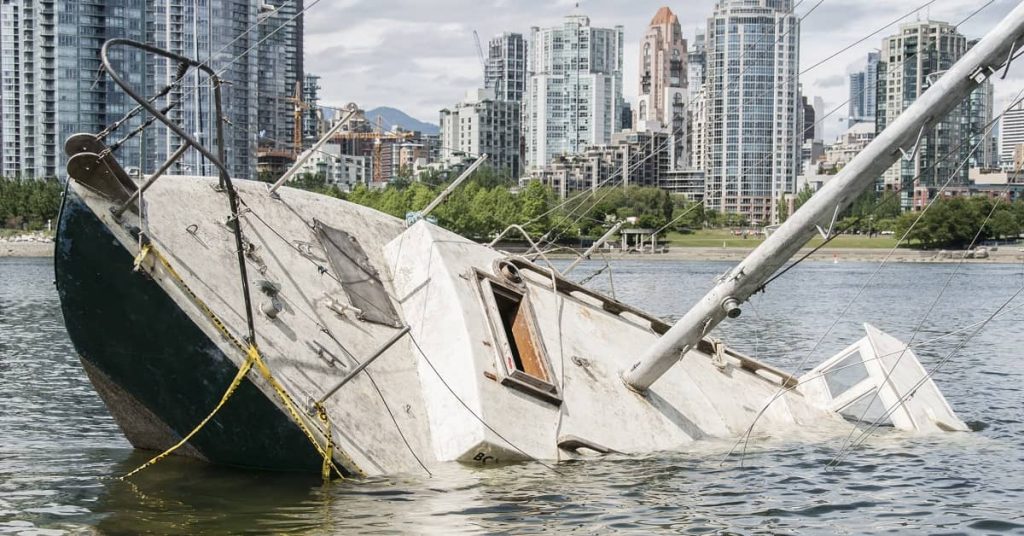
Frequently Asked Questions
How can i prevent a boat from capsizing.
To prevent a boat from capsizing, it is essential to follow safety precautions and maintain stability. First, be aware of the surrounding conditions, such as high waves or strong winds, and avoid them if possible. Ensure that all gear is secured and everyone on board is wearing a life jacket CGAA . Additionally, distribute weight evenly across the boat and avoid overloading or sudden movements that could compromise its balance.
What are the common causes of capsizing?
Common causes of capsizing include wave action , high winds, abrupt turns, and improper weight distribution. Additionally, a boat may capsize if it is structurally compromised, inadequately maintained, or encounters large waves or other hazardous conditions.
How do you recover from a capsized boat?
Recovering from a capsized boat depends on the size and type of boat, as well as the severity of the situation. Small sailboats, such as dinghies, can often be manually righted by their crew Wikipedia . In the event of a more severe capsizing, the priority becomes the safety of the passengers and crew. Assess the situation and risks, and follow the guidance of the captain or designated crew member CGAA .

Is it possible for large ships to capsize?
Yes, large ships can capsize, although it is relatively rare. Due to their size and engineering, large vessels often have more built-in stability mechanisms. However, in extreme conditions or if the ship's structural integrity is compromised, capsizing can still occur Ocean Marine .
What are the safety measures to follow during a capsizing incident?
During a capsizing incident, the primary objective is to ensure the safety of all passengers and crew members. Always wear life jackets, maintain clear communication, and follow the directions of the captain or designated crew member. If abandoning the vessel becomes necessary, gather essential supplies, stay together, and try to stay afloat using flotation devices until rescue arrives CGAA .
How does the design of a boat affect its stability and capsizing risk?
The design of a boat can significantly impact its stability and risk of capsizing. Factors such as hull shape, materials, and center of gravity are crucial in determining its ability to withstand external forces or recover from a tipping motion. Proper engineering, regular maintenance, and attention to safety features all contribute to a boat's stability and lower the risk of capsizing Marine Insight .
- Capsizing - Wikipedia ↩
- Kayak Safety - American Canoe Association ↩
- Ship - Dynamic Stability, Buoyancy, Trim | Britannica ↩
- Maritime Safety Management - International Maritime Organization ↩
- Chapter 8 - Keep your vessel stable - Transport Canada ↩
- Tips to Avoid a Speedboat Accident - BoatUS Magazine ↩
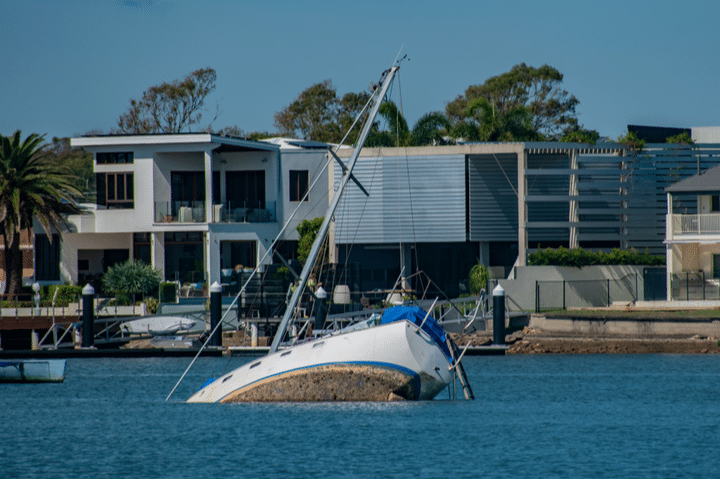
What Should You Do If Your Boat Capsizes

Table of Contents
Last Updated on February 24, 2022 by Boatsetter Team
It doesn’t occur often, but sometimes the worst happens when you are out on the water, and your boat capsizes, putting you and your passengers at a safety risk. If emergency situations occur, it is key that you are prepared for them beforehand. Then, when an emergency occurs, you should know what to do as a result of knowing what steps to take in advance.
In this article, we cover everything concerning the hypothetical situation that your boat capsizes so that you and your crew can be prepared.
What Causes a Boat to Capsize?
A capsize is defined as a boat rolling over onto its side or completely over. Boats capsize because they become unstable. There are three main reasons for that instability: too much or unbalanced crew and equipment weight; leaking water, which also creates too much weight; and bad weather, which causes instability as the boat is rocked and filled with water.
What Boats are at a Risk to Capsize and Why?
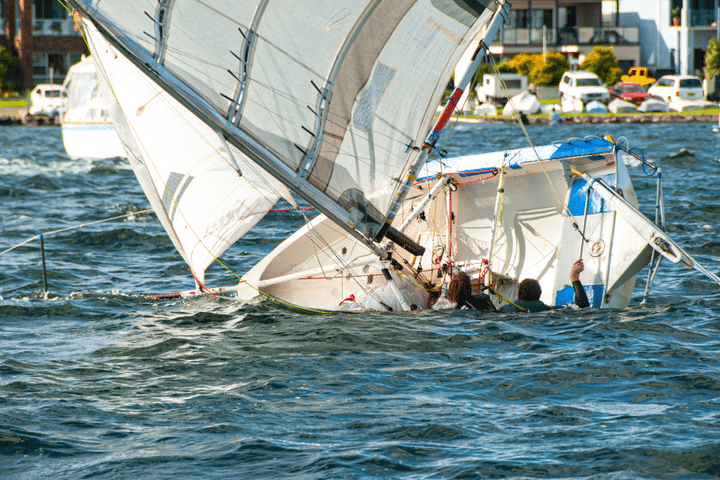
The majority of capsizes are smaller boats. About 10 percent of capsizes are 8-footers, mostly dinghies, and these capsize often don’t cause very much damage. The biggest group by far consists of 15-19 footers, representing 41 percent of all capsizes. These boats are typically fishing boats, often with large, hard-to-drain cockpits, sometimes out in poor weather, and sometimes overloaded. The next most common group are boats in the 20-24 foot range, representing 25 percent of all capsizes; finally are the largest boats, those over 25 feet, representing 18 percent of all capsizes.
Poor Weight Distribution
The most common cause of boat capsizing is poorly distributed weight. The 15-19 footers are the most susceptible to the main cause of capsizing, which is poorly distributed weight, such as an extra person or two or a couple of heavy coolers aboard. Older boats especially may have gained weight over the years as more gear is stored aboard. On boats with cockpit drains, a large friend or a second cooler may be all it takes to make the water come back through the drains, filling the boat. While most of these under 20-foot boats must have floatation, they must also have a capacity plate that states how much weight and how many people can be safely on board.
It’s important to pay attention to this number and keep in mind that the number of seats in a boat is not always an indication of the number of people a boat can safely carry. Exceeding the capacity limits, even in calm water, can put you at a much higher risk of capsizing. All it may take is a stiff wind, a large wake , or an unbalanced load to lead the boat to flop over. Additionally, where the weight is distributed is almost as important as the amount. Too many people on one side of the boat forces the gunwale too far down, potentially allowing water to pour in. For this reason, boat manufacturers often proved a diagram for each boat showing where passengers can safely sit, not to upset the boat’s balance.
Some boat manufacturers label upper decks on their larger boats to indicate how many passengers can be on upper decks. The weight that is substantially above the waterline raises the boat’s center of gravity and makes the boat less stable and more likely to capsize. Another thing to keep in mind is that people have gotten larger over the years.
The Center for Disease Control (CDC) says that the average weight of an individual in the United States has increased to 185 pounds, up significantly since commercial passenger-carrying regulations went into effect in the 1960s when the average American weighed 160 pounds. As you can imagine, those extra pounds can add up, especially on larger boats that are capable of carrying many passengers, causing your boat to be unbalanced. While it may not be your initial impulse to do so, it’s a good practice to eyeball your guests and try and get a ballpark estimate of weight before you take out a larger group.
The bottom line is that loading too much cargo or too many passengers in one part of the boat can affect the boat’s stability, even when the total load is within the boat’s maximum capacity. Additionally, weight needs to be evenly distributed, especially on a small boat.
The second major cause of capsizing is leaks. Sometimes it’s as simple as forgetting to put in the drain plug; other times, it’s leaking fittings. Water sloshing around in the bottom of the boat affects stability, allowing for waves or a wake to cause the boat to flip. Tying the drain plug to your boat is a simple way to remember the plug. On the other hand, leaking fittings that can fill the boat with water are usually out of sight, often in livewells and bait boxes. Any fitting that penetrates the hull needs to be closed and made from stainless steel, bronze, or marelon.
Many older boats have low transom cutouts that can cause the boat to flood simply by slowing down too quickly, especially with excess weight in the stern . Newer outboard boats have a well that reduces this particular risk.
Some boats have cockpits that drain into the bilge , requiring the use of a bilge pump even to stay afloat. Bilge pumps are designed to remove nuisance water only, not to keep a boat from sinking. One must be cautious if your boat’s cockpit drains into the bilge because if the bilge pump fails, your boat can fill with water and capsize or sink.
Bad Weather
The third major cause of a capsized vessel is bad weather, which often acts in concert with some of the factors spoken of above, such as overloading or unbalanced loads, to cause a boat to capsize. Small boats are easily overwhelmed by modest waves or even a large wake, especially if they have a large load and sit low in the water. A sudden squall can flip even larger boats. Therefore, it is important to check the weather forecast before going out and keeping an eye on the sky.
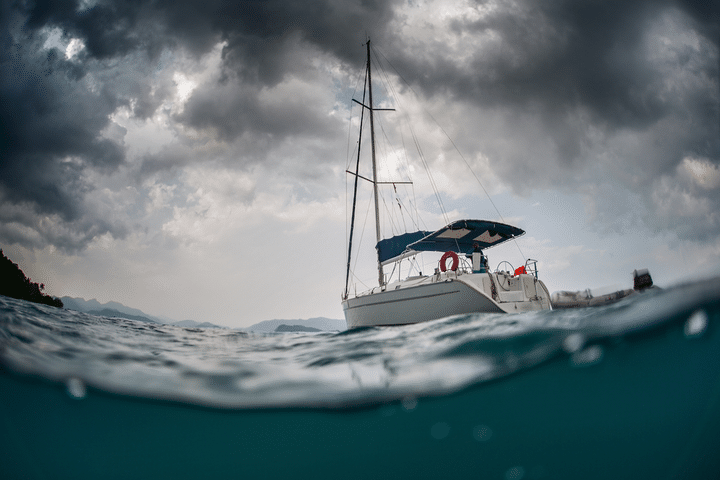
In most areas, NOAA broadcasts continuous weather via radio. If you are in a cellular data range, smartphone apps can show you detailed weather maps, including radar, indicating approaching storms. Since weather changes quickly on the water, you need to head back to the dock at the first sign of bad weather. If you do happen to be caught in a storm, you and your passengers should stay low near the boat’s center to maintain stability.
How to Proceed if Your Boat Does Capsize
Now that we have gone over the risks of capsizing that each boat faces and how you can avoid these risks, it’s still important to know what to do if your boat capsizes.
The first thing you should do when a vessel capsizes is, check the people onboard and make sure that no one is injured.
If you made the mistake of not wearing a lifejacket or a PFD, find one and put it on. If you can’t put it on, hold onto it and have the other passengers do the same.
Next, do a headcount of those who were on board.
The most important thing you can do is stay with your boat if it remains floating. This exponentially increases your chances of being rescued by fellow boaters or the coast guard rescue crews. It’s a lot easier for someone flying over in a helicopter, for example, to find an inverted hull in the water than people floating in the vast sea.
Another recommendation is to retrieve as many supplies as possible from the capsized boat, such as flares, distress signals, and extra flotation devices. Find anything that floats and tether it to the boat to create a bigger target for people searching for you. Another strategy is to release some items into the water to create a debris field which also helps spotters.
If the boat is still floating, try to climb onto the hull to reduce exposure to the water. Water steals body heat 25 times faster than air does. To stay warm and stave off hypothermia, you and the other passengers need to huddle together to pool warmth.
It’s important to remember that if you are more than 100M from shore, don’t try and swim to shore. It is safer to stay with your party and the boat and wait to be rescued.
Conclusion:
It’s easy to feel that you are invincible when you are out on the water in your boat of choice. Still, the fact is that it is important to keep an eye on the safety of you and your passengers, especially when it comes to the possibility of capsizing. Too much weight or unbalanced weight can severely affect your boat’s stability. Leaks can also be a large contributing factor to capsizing. And finally, one must always be wary of the weather when going out on a boat.
In case of disaster, It is important to follow the procedures listed above, such as putting on life jackets , staying with the boat, and salvaging all life jackets and floatation devices from the boat to increase your visibility. By following these procedures, you increase your and your passenger’s chances of a safe rescue.

Boatsetter empowers people to explore with confidence by showing them a world of possibility on the water. Rent a boat, list your boat, or become a Boatsetter captain today.
Browse by experience

Explore articles
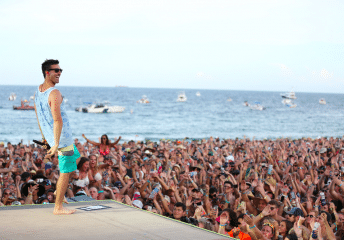
Rock the Boat at the Top 4 Waterside Music Festivals

Memorial Day Sail: Trending Destinations & Unique Boats for an Epic Long Weekend
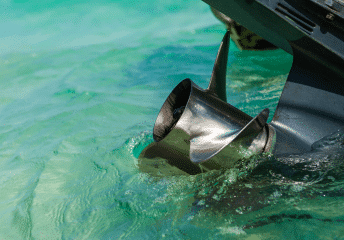
21-pitch prop vs. 19-pitch prop
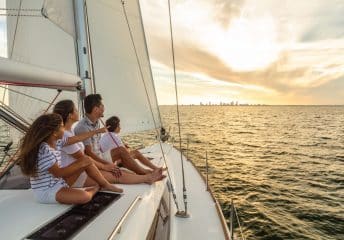
How to Build a Budget to Buy a Sailboat
There are two main causes of capsizing. One of them is the result of the wind overpowering the boat and its crew so that the boat heels excessively until it fills with water and capsizes to leeward. The other is normally the result of a crewing error in strong winds, usually on a downwind course, so that the boat becomes unbalanced and capsizes, generally to windward. Although on the whole one-designs allow a fairly large margin for error on the part of the crew, racing one-designs don't, as they are more sensitive owing to their relatively larger sail area and lighter hulls.
Capsizing is an ever-present possibility in all unballasted boats, and it is important that you know how to deal with it. You need to be familiar with the correct righting techniques which should form part of your basic seamanship training. As a beginner you would be well advised to deliberately capsize your boat , but under supervision, to learn how to right it; your confidcncc will be improved if you have already capsized in a controlled situation.
All one-designs havesomebuoyancy sothere is no danger that they will sink, provided that the buoyancy has been checked before launching. The amount of buoyancy is important (see pages 46—7): too much can cause the boat to blow away on its side or float so high in the water that the upturned centreboard is out of reach. If you buy a new boat, capsize it in shallow water to determine its behavior so that you can adapt your righting techniques accordingly. The method you use will depend to some extent on the circumstances of the capsize and the type of boat.
Before the development of the scoop method (shown right), a crew trying to right their boat had to swim it around head-to-wind so that it would not blow over again as soon as it was righted; alternatively, they sometimes found they had to lower the sails before attempting to bring the boat upright. The scoop method, however, has the advantage of permitting a boat to be righted irrespective of its position relative to the wind as the crew is already aboard to act as ballast. Some more complex capsizes will require modifications of the scoop method or even different techniques (see pages 88—9).
Whatever the circumstances of the capsize, the crew should stay with the boat. It is much more visible to a rescue launch than a lone swimmer and the shore may well be further away than it appears.
Righting a boat — scoop method
In this method, the crew is scooped up inside the boat as it is brought upright by the helmsman who stands on the centerboard and pulls on the jib sheet. Because the crew is already aboard when the boat comes upright, he acts as ballast and prevents the boat from capsizing again immediately after righting When the boat capsizes to windward, the crew must wait for the sail to swing over to the other side of the boat before leaning over to help the helmsman aboard. Both helmsman and crew must understand their respective tasks and carry them out accordingly. The crew must also take care not to pull on the boat before the helmsman has climbed onto the centerboard or it may invert on top of him. Lightweight racing boats are particularly prone to inversion. The techniques for dealing with an inverted boat are described on page 89.

1 Crew checks that the centerboard is in the fully down position. He then sorts out the mainsheet while the helmsman swims to the transom and checks the rudder fitting is still in place.
4 The crew lies down in the boat, holding onto the toe straps or the thwarts, while the helmsman climbs onto the centerboard, using the jib sheet as a lever if necessary.

Position of the helmsman
The helmsman must take care to stand at the root of the centerboard, as close to the boat as possible, to prevent it breaking under his weight. He must be ready to let go of the jib sheet and grasp the side decking to lever himself aboard the boat as it comes upright. Throughout the righting sequence both helmsman and crew should talk to each other so that they know what is happening.

2 The crew holds the transom steady while the helmsman, taking the mainsheet over the rudder, swims to the centerboard. using the mainsheet as a lifeline until he gets there

3 When the helmsman has reached the centerboard and grasped it. the crew swims around to the inside of the boat, sorts out the upper jib sheet and throws it over to the helmsman.

5 The helmsman, after checking that the crew is ready, stands on the centerboard as close to the boat as possible and starts to pull on the jib sheet to begin the righting movement.
6 The helmsman continues to pull on the jib sheet until the boat is nearly upright and scrambles aboard over the side decking. Both crew members then prepare the boat to sail off immediately.

2 She grabs the jib sheet and scrambles out onto the centerboard. standing as close to the root of the board as possible.
3 The helmsman grasps the lower toe straps and is scooped aboard as the crew rights the boat by pulling on the jib sheet.
Righting a trapeze boat
In racing boats if the crew is not out on the trapeze you can use the normal righting method. However, for the occasions when the crew is trapezing. both helmsman and crew have to learn how to react very quickly in the event of capsize. They must perfect a righting technique which is rapid and efficient. The first priority is for the crew to unhook and climb out on the centerboard as rapidly as possible to prevent the boat from inverting. The helmsman performs the role normally carried out by the crew and is scooped up into the boat in the usual way.
1 The trapezing crew moves her weight back onto the gunwale as the boat capsizes and unhooks rapidly from the trapeze.

2 He swings himself onto the centerboard. and rights the boat by pulling on the gunwale.
1 As the sail starts to hit the water, the helmsman should grasp the upper gunwale and begin to lever himself up. ready to climb over the side as quickly as possible.
Righting single-handed
Single-handed boats can be difficult to right as the center-board floats high in the water and the boat can blow away from you. If you sail single-handed you should develop a technique whereby you do not actually fall in the water, but start to scramble up over the gunwale as the sail hits the water, ready to right it by standing on the centerboard and pulling on the gunwale. If you do fall in the water, the boat can sometimes be righted by grasping the bow and sinking it so that the boat rotates to its normal floating position.

2 Crew then bundles spinnaker into pouch (or chute) before starting normal righting sequence the other presses down hard on the stern to break the air seal. Once in the normal capsize position, the boat is righted in the usual way. If the centcrboard has not retracted the job is made much simpler because one person can use it as a lever. It is important to make sure the jib sheet is brought over forward of the centerboard to prevent it slipping backwards.
Righting when a spinnaker is set
Righting an inverted boat
If the crew are slow to react to a capsize, the boat can easily invert. The air is then trapped under the hull and the boat forms a seal with the water which can be difficult to break. The method you use to right an inverted boat will depend on the position of the centerboard. If you capsize with the centerboard fully retracted, or if it retracts during the capsize, recovery will be made harder because you do not have it to use as a lever to right the boat. Whatever the method, the boat should be righted so that the mast comes up towards the wind. This will then make recovery from the normal capsize position much easier, and will prevent the boat from capsizing again. It is best if one person pulls on the jib sheet, standing on the gunwale, while
If you have the misfortune to capsize your boat with the spinnaker set. the first task is to release one corner of the spinnaker so that it doesn't act as a sea anchor. The next job is to get the spinnaker down. If the boat inverts with the spinnaker set, bring it up to the normal capsized position before starting to right it in the usual way.
1 Crew finds one corner of the spinnaker and undoes the sheet from the clew.

3 Both helmsman and crew continue pulling until boat gradually turns over until it lies in normal capsized position.
4 Crew climbs onto centerboard aided by helmsman and righting sequence (see previous page) is followed in usual way.
1 Helmsman finds a jib sheet from inside boat. Helmsman and crew swim to other side of boat and crew climbs onto gunwale and grasps centerboard.
2 With helmsman and crew both kneeling on boat, crew starts to pull on centerboard while helmsman pulls on jib sheet

If you capsize in shallow water your mast may dig into the mud so that you have to be towed off. Make sure that the righting line from the towing boat is clipped or tied to the shroud and taken over the hull (below). Where possible, arrange for the boat to be pulled upright against the wind (right).

Every one-design should have a painter attached at the mast and led through a bow fitting. If a single boat is towed in calm conditions it can be fastened alongside the towing boat (right)
or towed behind the rescue boat. If more than one boat is towed, each one can be attached with a rolling hitch (see page 532) to a rope trailed from the rescue boat.

Crew under sail
Crew under hull
There is plenty of air inside the hull. Swim to an outer edge and push yourself under the side decking to get out
Crew trapped
Now and again, as the result of a capsize, the crew gets trapped either under the sail or in the inverted hull. Neither situation is dangerous although it can be alarming if you do not know the correct procedure to deal with it.
Crew beneath sail Push your hand up and make an air pocket in the sail. Then, keeping one hand above your head to push the sail, work your way,using a seamline to guide you, to the outside edge.
Continue reading here: Man overboard
Was this article helpful?
Recommended Programs

Myboatplans 518 Boat Plans
Related Posts
- Broad Reach With Tide - Sailing Procedures
- Reefing - Sailing Procedures
- Simple capsize drill - Sailing Techniques
- Basic Rescue Tips for Water
- Catamarans - Sailing Procedures
- Changing course - Sailing Procedures
Readers' Questions
Can a sailboat capsize?
Yes, a sailboat can capsize. When a sailboat capsizes, it means that it overturns or flips upside down. This can happen due to various factors such as strong winds, improper sail handling, excessive weight on one side, or by hitting a large wave or obstruction. Capsize can be dangerous and may lead to injuries or even the sinking of the boat if not handled properly. Sailors are trained to prevent capsize and to know how to respond if it happens.
What should you do if your boat capsizes and floats away?
If your boat capsizes and floats away, it is important to stay calm and act swiftly. Here are the steps you should take: Stay with the boat: If possible, try to stay near the capsized boat because it can provide you with some buoyancy and increase your chances of being spotted by rescuers. Cling onto the boat or any floating debris. Assess your supplies: Check if you have any floating supplies near you such as life jackets, oars, or emergency kits. These can provide assistance until help arrives. Signal for help: If there are other boats or people nearby, make yourself visible by waving your arms, shouting, or using any signaling equipment you have. If you have a whistle or flare, use them to attract attention. Stay visible: If no immediate help is available, focus on remaining visible. If you have bright-colored clothing, put it on or use it as a flag. Try to paddle or swim closer to the shore or any potentially safer location. Conserve energy: After the initial panic, try to conserve your energy. Avoid excessive swimming or thrashing around, as it can increase fatigue and hypothermia risks. Instead, tread water or float to preserve energy. Use the HELP position: If you are alone, use the Heat Escape Lessening Position (HELP) technique to reduce heat loss. It involves crossing your arms tightly against your chest while drawing your knees up towards your body. This position helps reduce heat loss from the armpits, chest, and groin. Stay positive and hydrated: Mental resilience is crucial in survival situations. Keep a positive mindset by focusing on positive thoughts or engaging in mental exercises. If you have access to drinking water, consume small amounts periodically to stay hydrated. Remember, the best course of action is to prevent a situation like this from happening by equipping yourself with proper safety measures, such as wearing life jackets, knowing how to swim, and being familiar with boating safety protocols.
What causes a boat to capsize?
A boat can capsize for a variety of reasons, including strong winds, waves, improper weight distribution, or an uneven hull or center of gravity. Other causes may include an overloaded boat, a collision, or striking a submerged object. Prolonged exposure to wind, waves, and excessive speed can also cause a boat to capsize.
Your source for the latest news on yachts, boats and more. Read through our articles to find out how to compare boats and find the right fit for you!
What is a Sailboat Capsize Ratio and how to measure it
Aug 05, 2020
less than a min
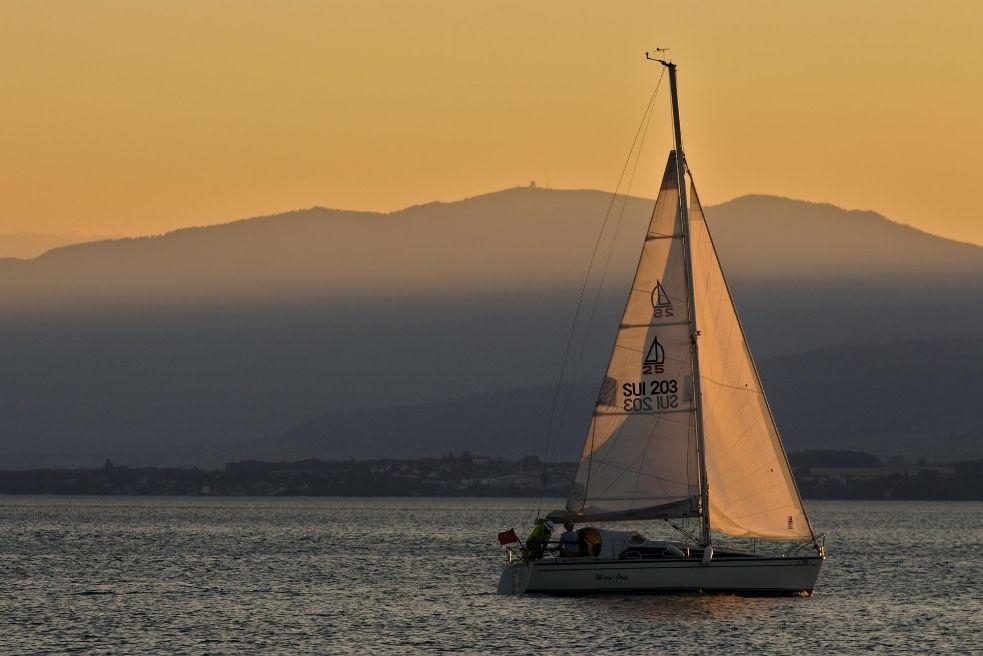
As a boat owner, there are many formulas and ratios that you should know about. Do not worry if you are new to the whole marine and naval realm, however. There is always time to learn more if you are willing to. Here is a summary of what a sailboat capsize ratio is.
A sailboat capsizes ratio is a parameter used to show whether a boat can recover from an inverted, capsized position or not. This term was mainly developed after the Fastnet race disaster . This was a 1979 race where a storm destroyed several yachts during the last day of the race, also causing 19 victims. Since then, tank tests have been developed to offer a prediction on how likely is a boat to recover after capsizing.
The capsize ratio is a good indicator of what the boat is designed for. For example, if a boat has been designed to be used at sea, then it will have been equipped with features to make it more stable and prevent it from flipping over or capsizing. The capsize screen in this case can have a value below 2.
A capsize of over 2 does not necessarily mean a bad thing. Boats with such a capsize value are better for coastal cruising as they offer higher form stability and a larger interior. In addition, these boats sail closer to the shore which allows them to return to safety in no time in case of a disaster.
How to measure the sailboat capsize ratio
There are several online calculators that can help you figure out your sailboat’s capsize ratio . These calculators are based on the capsize screening formula defined as below:
Capsize Screening Formula = Beam / ((Displacement/64.2)1/3)
The displacement in this formula is measured in pounds . This formula does not take into consideration the location of the ballast or the shape of the hull. In terms of understanding the value here’s the gist. The lower the value, the less likely is the sailboat considered to capsize. If the value is 2, then the boat is still accepted to take part in races, although this might depend on the race committee.
The sailboat capsize ratio is also related to the displacement and beam. Therefore, two sailboats can have the same value if they also have the same displacement and beam. Their stability however could differ although they have the same capsize value.
All in all, the sailboat capsize ratio is more important when related to racing sailboats used further from the shore. This parameter is not a crucial one to take into consideration when analyzing a chartered yacht or any sailboat intended for pleasure.
You might like these too

Sailboat or Motorboat – Learn the pros and cons lg ...
Aug 24, 2022

Types of Catamaran Boats: Sailing, Power, and Luxury Catamarans lg ...
Feb 10, 2023

Which is better a wooden boat or fiberglass boat lg ...

What are the main types of sail rigs for sailboats lg ...

Which is the Best Economical Catamaran lg ...
Oct 04, 2021

What is a Chine on a Boat lg ...
Oct 01, 2021

Capsize Causes and Solutions – Part 1
As promised in our post on major mistakes, here’s our cut at a definitive list of capsize causes and solutions for small boat sailors. Capsizing is a fertile topic: there are dozens of ways to pitchpole , broach , death roll , or just plain tip over.
We compiled this list from our scow sailing friends, internet sources, and my own admittedly vast experience with capsizing. I’m sure there are more, so please share your insights – login and comment below or email us at [email protected].
It made sense to group the list into categories. We chose five main causes and listed the physical errors and tips associated with each.
- Too much heeling force
- Not enough righting moment
- Off-wind balance issues
- Avoiding other boats
In this installment we’ll cover too much heeling force and not enough righting moment. In Part 2 , we address off-wind balance issues. We finish with Part 3 on waves and avoiding other boats.
Too Much Heeling Force
To stay upright, you have to balance the wind’s heeling force with righting moment (i.e., hiking). You can only hike so hard, so you must reduce the heeling force when overpowered. This sounds simple, but in the heat of battle, sailors typically make either or both of the following mistakes.
Failure to ease
As the saying goes, “Ease, Hike, and Trim” is a lot better than “Hike, Hike, and Swim.” The fastest (and driest) sailors ease the mainsheet aggressively in puffs. Here are the typical causes of failure to ease.
- Head in boat. Anticipating the puff and easing as it hits gives you more margin to capsize. As a bonus, it also makes you faster.
- Cleated. Simple solution – don’t cleat it. I tape my mainsheet cleat shut to prevent accidental cleating.
- Knotted. One tip is to tie the free end to an eye in the boat to prevent a real knot from forming.
- Block twisted. If the mainsheet blocks aren’t parallel to the boom, the mainsheet can get bound up when you try to ease. This happened to one of our MC Scow national champions. The Harken standard blocks have a lever or set screw to lock the blocks parallel to the boom.
- Tangled around foot. This is a tough one. Practice keeping your mainsheet off your feet as you trim in. Wear shoes that don’t catch the sheet.
- Too thick to run through blocks. Thick mainsheets are easy on the hands, but they don’t run through the ratchet blocks easily. Toughen up your hands and use a narrow mainsheet.
- Improper grip. Hold the mainsheet in your fist with the thumb side toward your chest. To ease rapidly, just release your grip.
- Too much purchase. If you have too much purchase on your mainsheet, you won’t be able to ease rapidly. Anything more than 5:1 on an MC Scow is probably too much.
- Boom not free to move to leeward. C Scow sailors know that boats with running backstays will capsize if the leeward backstay is cleated. Some C Scow sailors remove their backstays in light to medium air.
Unforgiving setup
You can’t always ease rapidly enough, so you should also avoid unforgiving situations, such as the following.
- Over-heeled. Sail the boat flat to maximize margin.
- Traveler on center. Having the traveler on center is unforgiving in breeze. Sail with your traveler down to reduce the side force of puffs. As a bonus, sailing with traveler down and the main sheeted hard is faster than traveler up and sails eased.
- Be ready to dump the vang in the biggest gusts
- Ease your vang before tacking, in case you bear off too far after the tack
- Ease your vang before ducking another boat
- Over-sheeted for the point of sail. If you start sheeting before rounding the leeward mark, you’re a sitting duck for a puff when you’re broadside to the wind. Instead of sheeting in early, learn how to coordinate sheeting with your turn.
- While tacking or gybing. Don’t let go of the tiller extension when you tack or gybe. Learn how to switch hands. Otherwise, you may bear off too far, or collide with another boat.
- While standing or resting. If you need to let go of the extension, make sure it doesn’t get caught under the deck. If it does, the boat will be headed for trouble before you know it.
Not Enough Righting Moment
You and your crew have direct control over righting moment. To keep the boat upright and moving fast, you need to manage it precisely and smoothly. Here are the capsize causes we found related to righting moment:
- Inactive sitting position. Ever rolled to windward hard in a lull, or tipped over to leeward in a puff? Maybe you were sitting too passively. Sit so you can react: feet planted, quad muscles engaged, upper body ready to move in or out. There’s a nice clip in the Steve Cockerill video at 07:45 on this.
- Out of position. Bad things can happen when the skipper or crew is out of position. It might be fun to collect a list of examples, but I ran out of time and didn’t want to embarrass myself. Think ahead before you get too far out of position.
- Too much weight in one place. A heavy skipper-crew combination sitting on the rail can be a problem, especially when sailing downwind. We’ll cover more about downwind dynamics in Part 2.
- Falling in the boat. Falling in the boat changes the righting moment instantly and causes lots of capsizes. Every sailor needs to work on balance and combatting clumsiness.
- Loose shackles
- Worn straps
- Straps not elevated
- Cords keeping the straps elevated break
- Water in the boat. Water in the boat always goes where you don’t want it: to the low side if you heel up, forward if you plow into a wave, etc. Don’t tolerate water in your boat. Sail with your bailers open while racing and especially between races.
To be continued ….
Related Posts

Gain Dinghy Handling Skills With Fresh Insights
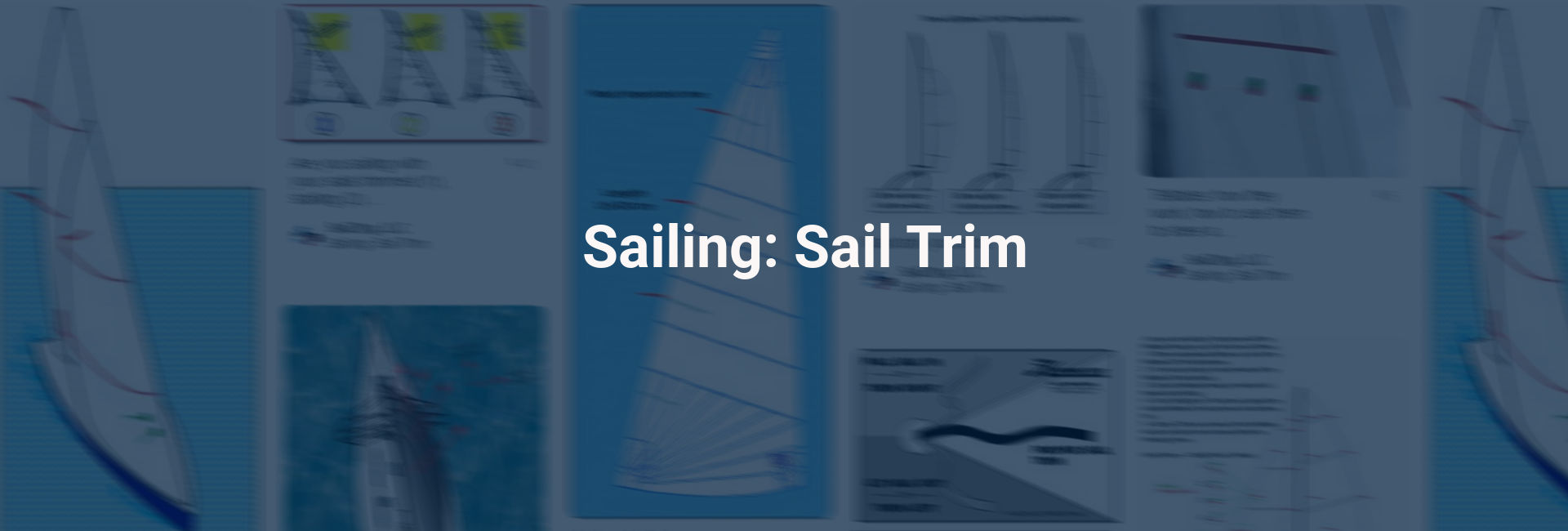
Sail Trim Board
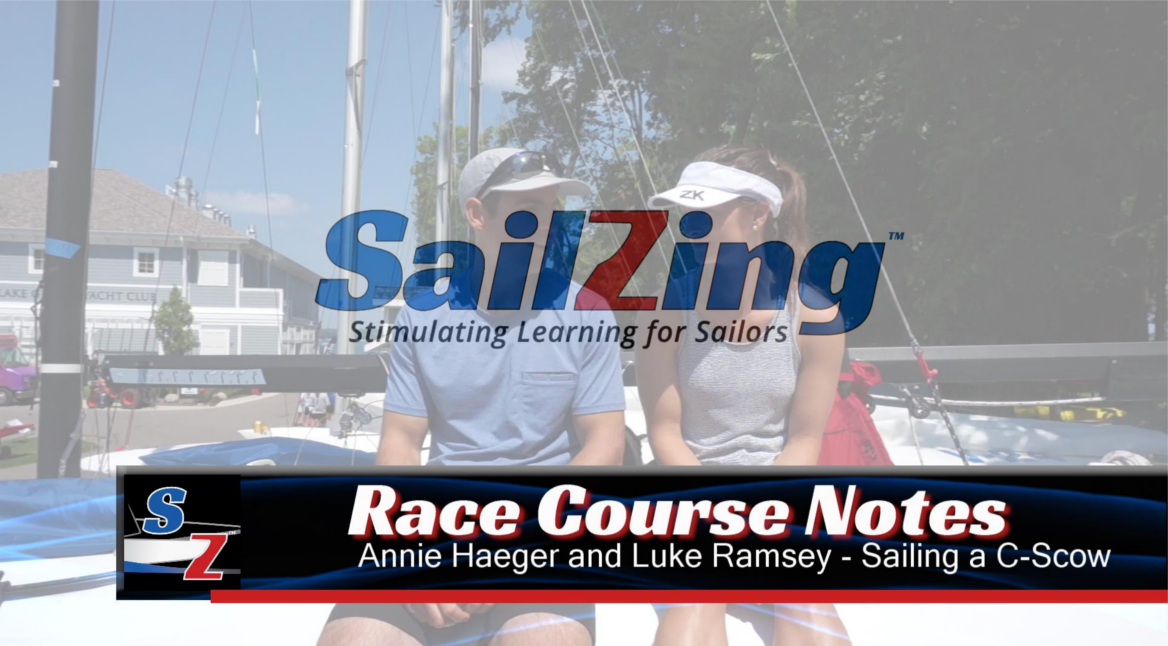
Olympians Share C-Scow Race Course Notes – ILYA Championships
Leave a comment cancel reply.
You must be logged in to post a comment.
This site uses Akismet to reduce spam. Learn how your comment data is processed .
Insert/edit link
Enter the destination URL
Or link to existing content
- Paddle Board

What to Do if Your Boat Capsizes: Here’s Everything You Need to Know
When you think of enjoying a nice afternoon out on the water, what’s the ideal setting? It’s probably cruising over the lake as the sun sets, enjoying the fresh air and nature at her finest.
We doubt it involves the boat upside down in the water, with you clinging to the hope of rescue. However, capsizing your boat can be a real threat, and you need to know how to deal with the situation should it occur.
Here’s everything you need to know to handle a capsize on the lake or at sea.
What Should You Do if Your Boat Capsizes?
First – don’t panic.
One element of a capsizing event can cause the biggest loss of life or unnecessary injury – panic. When a capsize occurs, it’s a stressful event. Even seasoned captains may find themselves suddenly overcome by the adrenaline surge involved with the situation’s urgency.
So, it’s understandable that your passengers who have little experience on the water may start to panic. Panic is a killer, and it leads to people making stupid mistakes at the moment that lead to death or injury. Before you go out on the water, it’s important to give your passengers a short safety briefing.
Explain the protocols and procedures if something goes wrong. While they likely won’t help much in a real-time situation, it may be enough to get people to stop panicking and keep their cool.
If people have a hard time controlling their emotions, get them to close their eyes and focus on their breathing. Have them inhale and exhale for longer than they inhale. This action activates the parasympathetic nervous system, helping them control the adrenaline surging through their body and mind.

Make Sure You’re As Safe As Possible
After the capsize, attend to your immediate needs first. Secure your life jacket and make sure you’re floating. You can’t help anyone if you are in a precarious position yourself.
There’s a proverb in boating that says don’t try to rescue someone and make it two people that end up drowning. Make sure you’re safe, and then turn your attention to the other passengers as fast as possible.
Look Around for Others and Count Heads
If you’re by yourself in a capsizing situation, then you only have yourself to worry about. However, if you’re on a boat with several passengers, it’s your responsibility to ensure the safety of your passengers. If the boat capsizes, stay calm and review the situation. Start looking around you for your passengers and conduct a headcount as soon as you have your bearings.
Get acquainted with all passengers before you go out for the day. If something goes wrong, you’ll have to call that person by their name to catch their attention. If you notice anyone’s missing, they may be under the boat. If the water visibility is good, start diving underwater to find the missing people.
Once you have everyone accounted for, it’s time to start planning the best strategy to get out of the water.
Keep Close to the Boat or Turn it Over If You Can
After capsizing, the first option is to get your bearings and try to right the boat. Some smaller sailboats , kayaks, canoes, and catamarans can easily turn right-side-up again.
If you can’t manage the turn the boat over, then try to remain as close to it as possible. When the rescue team is searching for you, they’ll discover the vessel, and if you’re not there, they’re likely to think you didn’t survive.
Climb On the Hull
If there’s no way to right the boat, try to make a plan to climb onto the hull. Just because the boat capsized doesn’t mean that it will sink.
Most boats will float upside down in the water, allowing you to climb onto the hull to get out of the water. This strategy is vital in cold water situations. If you float in cold water for more than 20-minutes, it can start the onset of hypothermia and potential loss of life.


Look for Flotation Support
When the boat capsizes, the debris on the deck may spill overboard on the water. Look around you for floating objects to improve your buoyancy.
Once you’re confident you’re afloat, try to make the effort of righting the boat or climbing onto the hull to wait for rescue.
Use Your Whistle and Wait for Help
Life jackets come with whistles attached to the PFD . If you capsize and people are within earshot, blow the whistle once for five seconds for a distress signal.
The key is to remain calm. You never know if someone hears you; they could be on the way to get help already.
However, keep blowing your whistle every few minutes to ensure the best chance of someone hearing you. You could have to wait hours for rescue, depending on the circumstances. So, remain as calm as possible and conserve your energy, especially if you’re in the water.
Prepare for the Worst-Case Scenario Before You Leave
Prepare your safety and emergency gear before you go out on the boat. Make sure you have everything ready to go before you leave the staging area at the launch. The last thing you want to do is hold up the ramp by making last-minute preparations.
Lifejackets are Essential
Every passenger on board your boat needs a US Coast Guard-approved life jacket. The Personal Floatation Device ( PFD ) may mean the difference between surviving and drowning if the boat capsizes. You could be waiting for hours for rescue, and eventually, even the best swimmers tire.
Keep a Throwable Type IV PFD Onboard
A throwable Type IV PFD connected to a rope is a must-have item for boat owners. These PFDs allow you to reel in people that fall overboard. If the boat capsizes, you can attach it to the boat to prevent you from drifting away.
Wear Anti-Slip Footwear
Anti-slip footwear is more useful than you think. You’ll find there are plenty of occasions where it can save you from a slip that may result in an injury. Choose reef shoes that mold to your feet, offering you a lightweight shoe with as thin a sole as possible.
Perform Safety Drills
You can your passengers need to understand what to do when danger occurs. When you’re in hazardous conditions, you need to be concentrating on the moment, not giving someone a safety briefing. Practicing drills on land will help you entrench the motor skills necessary to respond automatically in an emergency.
The Hazards Involved with Broaching in Open Water
Broaching can occur in heavy wave conditions at sea. Paddling too fast into the wave can push you in front of it and into the back of the wave in front of you. As a result, the kayak turns sideways to the waves, leaving you in a position to capsize the boat when the weave behind you catches up.
The Hazards Involved with Broaching in Whitewater
Whitewater can cause broaching by pinning the boat against a rock or obstruction in fast-moving currents. To make your escape, lean into the obstruction and let the current do the work of dislodging the boat. Strong currents may tear fiberglass canoes and kayaks in half or bend polyethylene kayaks, trapping you in the boat.
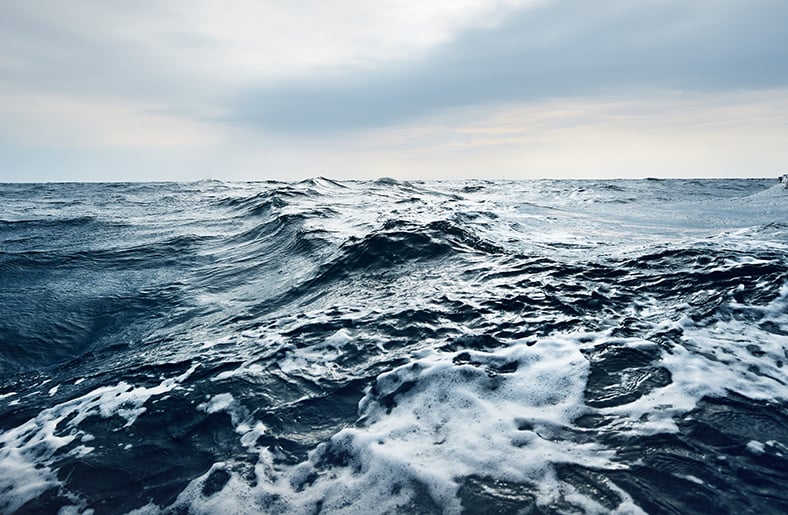
What Should You Do If Your Boat Capsizes? FAQ
Q: what is the bulldozing rescue technique.
A: The bulldozing technique for kayaks and canoes involves pushing the boat using the bow of your kayak to move it closer to the boater so they can turn it right-side-up. Bulldozing prevents the boat from drifting away.
Q: What is the boat-over-boat rescue technique?
A: The over-the-boat rescue involves launching the nose of the kayak under the boat, lifting the bow out of the water for easy return to right-side-up.
Q: Is it safe to tow someone else on the back of my kayak?
A: Yes, the person can heave their body onto the rear of the kayak and drag their legs in the water. They grip the edge of the cowling surrounding the cockpit, and that should provide enough stability for the rescue.
Wrapping Up – File a Float Plan or Tell People Where You’re Going
Filing a float plan is one of the best preparations you can make before venturing out onto the water. The US Coast Guard allows you to lodge float plans detailing your voyage. Many marinas also offer this service. If you capsize at sea, someone will notice you’re missing faster if your file a float plan and don’t show up when expected.
If you’re going out onto the lake, there’s nowhere to file a float plan. However, you can always tell a friend or family member where you’re going and when to expect you back. Being capsized at sea is usually a much more life-threatening experience than on the lake.
The lake has defined boundaries, and they’re usually aren’t strong currents or tides—every minute to your rescue counts when stranded at sea. So, filing a float plan just makes good sense.

John is an experienced journalist and veteran boater. He heads up the content team at BoatingBeast and aims to share his many years experience of the marine world with our readers.
What to Do If Your Boat Engine Won’t Start? Common Problems & How to Fix Them
How to launch a boat by yourself: complete beginner’s guide, how to surf: complete beginner’s guide to get you started.
Comments are closed.
Type above and press Enter to search. Press Esc to cancel.

Capsize – understanding the risks
by Simon Jollands | Boat Handling , Emergencies , Preparation

A skipper should know how their boat will cope with rough seas. By working within known limits and understanding the risks, then the chances of a capsize occurring are much reduced.
Safety is all about improving the odds. When considering the odds of a boat capsizing, knowing the limitations of its design and stability are critical. In order to do this, it helps to understand the basic principles of how a boat remains upright.
Basic principles
A boat remains upright because of the way its weight and buoyancy interact. The basic principle of buoyancy is that the upward buoyant force on a body immersed in fluid is equal and opposite to the weight of the fluid that the body displaces. The weight of the fluid displaced is known as displacement and the displaced water has an up thrust, or buoyancy, which is equal to the weight of the boat. The displaced water has a central point, or centre of buoyancy, which varies according to the shape of a boat’s hull and keel.
The centre of buoyancy is not to be mistaken for the centre of gravity. The weight of a boat is distributed along its length, pushing the entire vessel downwards. All the weight acts downwards through a central point, or centre of gravity, which is similar to the fulcrum or central point of a seesaw. All the structure and the distribution of weight aboard contribute to a boat’s centre of gravity.
To keep a boat stable in the water and prevent it from toppling over requires the centre of gravity to be low, which is greatly helped by having a deep, heavy keel and an engine below the waterline.
Angle of heel
If a sailing boat heels over in a strong gust of wind or is forced over by a big wave, then it will right itself once the gust or wave has passed. When a boat is upright then the force of gravity is directly opposed to the force of buoyancy. As the boat heels over the centre of buoyancy moves outwards and acts as a lever does, pushing upwards with an increasing force. This is fine up to a point, but eventually as the boat continues to heel the righting lever effect reduces and eventually is lost and then the boat will capsize and float upside down. This point is known as the Angle of Vanishing Stability (AVS).
Boats with a high AVS will resist becoming inverted and return to the upright position quickly in the event of a knockdown. These include narrow, heavy displacement boats with a deep draft which can heel to 120º or more. Once capsized, only a small amount of further rolling moves the hull into the positive righting area and the boat comes back upright. Boats with wide beams and shallow drafts tend to have high initial stability but may capsize at 90º of heel and will not always be self-righting.
Righting moment curve
Boat manufacturers publish righting moment curves of their yachts to show the stability characteristics of their designs. In Europe the Recreational Craft Directive (RCD) states that pleasure yachts between 2.5m and 24m must carry builders’ plates to categorize their boats in either Category A (Ocean), B (Offshore) or C (Inshore) and meet minimum standards of stability.
Breaking waves
Rules and regulations are one thing, but the force of steep breaking waves can knock any yacht down in coastal waters, especially if it is caught beam-on. Research has shown that the most significant factor in capsize is whether a wave is breaking or not. If the wave is greater in height than the beam of the boat, then it can easily knock the boat over. Tests carried out at Southampton University in England have shown that almost any boat can be capsized by a wave equal to 55% of the boat’s overall length. Such waves may occur where the seabed suddenly shelves towards the coast, or where wind is blowing against tide.
This research points to the fact that yachts seeking shelter often find themselves in greater danger when approaching harbours than when coping with a storm further out to sea.
Being prepared
If you are well offshore in rough weather, consider your options. If needs be, heave to and ride out a storm as the boat will be more stable and comfortable, but check you have sufficient sea room to drift downwind and are not approaching a lee shore. Another option is to lie ahull, with no sail up and the helm tied to leeward. If conditions worsen then the next stage is to lie to a sea anchor or drogue, which will prevent the boat from meeting waves beam on and reduce the vessel’s drift rate.
Don’t automatically head for the nearest harbour or your intended destination. Check first what the conditions are likely to be there, by considering the state of the tide, wind direction and whether there are danger areas such as headlands and sand bars to contend with. Check out all the alternatives and be prepared to alter your plans in order to opt for a safe option.
Tips to prevent capsize:
- Know your boat’s limitations.
- Don’t overload the boat.
- Pump the bilges regularly.
- Keep a generous margin of safety.
- Know when it is best to yield to conditions, rather than fight them.
- Avoid areas known for overfalls and tide rips.
- Avoid being caught beam on to breaking waves.

[fts_facebook type=page id=820902544629856 access_token=EAAP9hArvboQBAMMusRb1XctIwYq9fUcSZCVNDQAMjkZCiqAIMiZBkawPJZB3VkeSsH6gCIDfIZAslzZBRAEXYdesg0fu11YIst1FXtABBwdULjOsYFGUYqNujLSxRIWxKAcqm7bb9dmAgzJDZCVhkRj6r9useCQqJr4wJnxkBv909ySYxqj7hYl posts=4 height=650px description=no posts_displayed=page_only]
Recent Posts
- Navigating narrow channels
- DIY boat upgrades: Budget-friendly projects to enhance your (older!) boat
- Boat Security: Protecting your vessel from theft & vandalism
- Learning about diesel engine maintenance
- 2023 Rolex Fastnet Race – Part 3
WATCH: USA dramatically capsizes during Bermuda’s practice racing
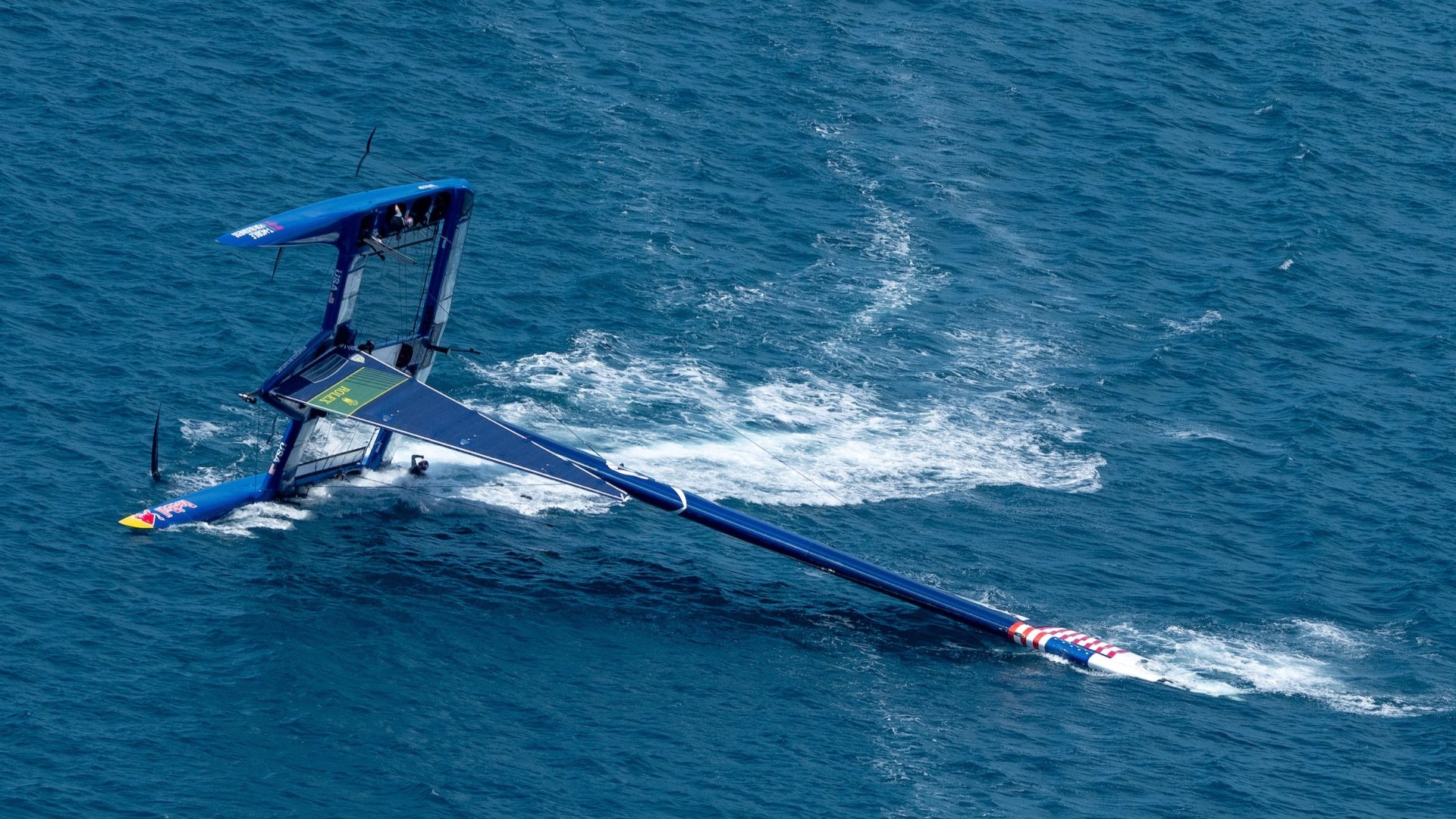
- Apex Group Bermuda Sail Grand Prix
This is the moment Taylor Canfield’s United States dramatically capsized during Bermuda’s practice racing.
The incident unfolded in the third practice race of the day, when the top of the wing looked to invert the wrong way.
The USA F50 immediately flipped over, but luckily missed the nearby teams of Emirates GBR and New Zealand. Thankfully all athletes are accounted for, and the damage sustained to the F50 is being assessed.
The rest of practice racing was incident free, with ROCKWOOL DEN, New Zealand and Australia topping the leaderboard after three fleet races.
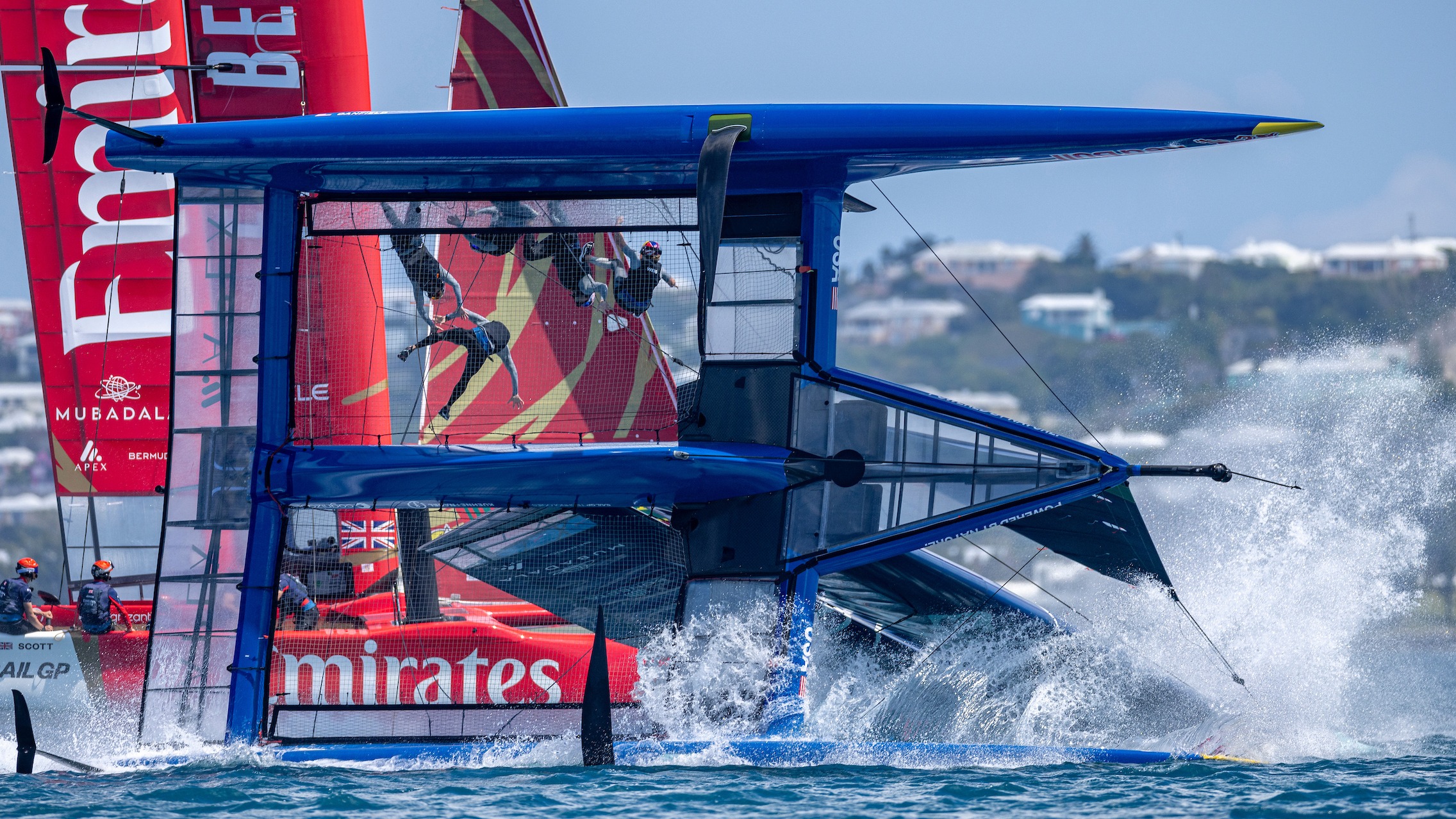
Bermuda’s racing will officially get underway tomorrow (May 4), with three fleet races taking place on the opening day. The second day of racing will see two more fleet races, before the top three ranked boats proceed into the winner-takes-all Final.

Bermuda marks the 10th stop on Season 4’s 13-event calendar and sees six teams - over half the fleet - aiming for a podium position to keep them in contention for the Season 4 Grand Final.
Racing begins at 2pm ADT on May 4.

More from SailGP

- EXPLORE Random Article
How to Handle Capsizing and Survive a Boating Emergency
Last Updated: January 8, 2024 Fact Checked
Surviving a Capsize
Preventing a capsize.
This article was co-authored by Travis Lund and by wikiHow staff writer, Eric McClure . Travis Lund is the General Manager at the Vallejo Marina, a large marina located between the San Francisco Bay and the Delta in California. Sailing since he was six-years-old, Travis has over 15 years working in sailing operations and instruction and has pioneered a coaching platform that combined traditional coaching with multi-camera video support. He studied English at Michigan State University, where he was on the sailing team. This article has been fact-checked, ensuring the accuracy of any cited facts and confirming the authority of its sources. This article has been viewed 5,227 times.
Capsizing, where a boat flips over and becomes inoperable, is one of the most dangerous emergencies you can encounter on the water. That’s why it’s so important to know what to do if the worst actually happens. It’s important to note, so long as you take the proper precautions before getting on the boat and know what to do if your boat does flip over, you’ll be okay. In this article, we’ll walk you through everything you need to do if your boat capsizes. We’ll also break down how you can prevent such an emergency in the first place. Read on to learn everything you need to do (and know) before taking your boat out.
Things You Should Know
- Stay calm, put on a life jacket, do a headcount, and signal for help with whatever means you have available.
- Keep everyone together and stay with the boat unless you’re absolutely positive you can reach the shore. A capsized boat will still float if it isn’t damaged.
- Avoid capsizing by staying seated in the boat, operating your boat responsibly, and tackling strong waves head on.

- The life vest should be snug and tight, but not so tight that you can’t breathe comfortably.
- If you’re going out on the water, always keep your life vest on at all times.

- If you have time, put out a mayday call by tuning to the most active channel and calling out “Mayday, mayday” followed by your GPS coordinates or position.
- If you have an emergency transponder (Emergency Position Indicating Radio Beacon, or EPIRB), just turn it on. It automatically calls for help.

- Once you’re in the water, blow the horn whenever you think someone may be able to hear you. A whistle in the water is a universal sign of distress.
- Light a distress signal or flare if you have one. You can do this before your boat capsizes if you have time, but you may need to do it in the water.

- If there are other people on the boat with you, do not split up or send someone to swim for help.

- Unless you are absolutely 100% positive that you can swim to shore, don’t abandon your boat. Even if you can see the shore, you’d be surprised how quickly you get exhausted. On top of that, you never know when a current will pull you further out from shore.
- If you’re in a river, don’t fight the current. Stay with the boat and orient yourself so your body is opposite to the nearest shore. This way, you won’t get pinned against a rock.

- If you can hold on to your boat, do that instead.
- If there’s debris or some other item that’s floating in the water that will help you stay above the water, go ahead and grab that.

- Unless your boat is in the middle of nowhere, it’s actually extremely rare for a capsize to result in anyone’s death or serious injury if everyone stays with the boat.

- If you are on the water and you see storm clouds forming, head for shore immediately.

- If your boat does spring a leak on the water and you don’t have sealant, head towards shore, keep your life vest on, and call/signal for help if necessary.

- Your knowledge of the boat should play a major role in how you operate it. If you don’t know the ins and outs of how easy your boat is to handle, always play it safe.
- Are you new to boating? If so, stay close to the shore and don’t take the boat out alone.

- Follow the recommended load capacity of the boat and keep the weight distribution even if you’re carrying any cargo.
- 70% of all boating fatalities are the result of people going overboard on a small boat—either because they fell or the boat capsizes. As such, it’s extremely important to take any preventative steps you can to avoid a capsize.
- If there’s a little hoop or bracket near the front of your boat, that’s where you’re supposed to tie off the anchor.

- This is especially important when you’re in a smaller boat, which is more likely to be thrown over by a heavy wave.
- If the currents and waves are so strong that you feel like you could potentially lose control of your boat, it’s a big sign that it’s time to head for the nearest port.
Expert Q&A
- Recovering a sailboat and rolling a kayak are important skills if you’re going to boat as hobby. Practice in shallow waters and get familiar with the techniques. You will capsize at some point, so be prepared! Thanks Helpful 0 Not Helpful 0
You Might Also Like

- ↑ https://www.ntsb.gov/investigations/AccidentReports/Reports/MAB1814.pdf
- ↑ https://files.dnr.state.mn.us/rlp/regulations/boatwater/boatingguide.pdf
- ↑ https://www.greenwichtime.com/local/article/Death-of-America-s-Cup-sailor-remains-unsolved-4641707.php
- ↑ https://www.fs.usda.gov/detail/r8/recreation/safety-ethics/?cid=fsbdev3_066382
- ↑ https://www.boatlife.com/boatlife-blog/sprung-a-boat-leak-here-are-three-steps-to-avoid-disaster/
- ↑ https://www.boatingmag.com/what-to-do-when-rogue-wave-heads-for-your-boat/
About this article

Did this article help you?

- About wikiHow
- Terms of Use
- Privacy Policy
- Do Not Sell or Share My Info
- Not Selling Info

Published on May 16th, 2024 | by Editor
Helping a capsized boat in a race
Published on May 16th, 2024 by Editor -->
by Dave Perry, chair US Sailing Appeals Committee A common situation is that a boat has capsized in a race, at least one of the crew is in the water, and there are Race Committee or coach/parent boats nearby watching the racing. Under the previous rule 41, Outside Help, if a support boat went over and lifted the mast of the capsized boat and held the boat while the crew climbed back onboard, the boat could have been disqualified from the race.
As a result, boats were refusing help, and/or support boats were reluctant to give help, out of the fear of causing the boat to be disqualified. That was considered an unsafe situation, and rule 41 was changed in the 2021-2024 rule book.
Recent Question 127, published in the US Sailing Appeals Book on January 1, 2024, discusses the new rule 41. Rule 41(a) states: A boat shall not receive help from any outside source, except (a) help for a crew member who is ill, injured or in danger.”
The phrase “in danger” is not defined in The Racing Rules of Sailing (RRS). The Terminology section of the Introduction to the RRS states that “other words and terms are used in the sense ordinarily understood in nautical or general use.” As understood in general use, the phrase “in danger” means: “the possibility of something happening that may injure, harm or kill somebody.”

When people are in the water, the possibility of injury, harm, or death exists. Therefore, it should be considered that they are “in danger” until it is obvious that they are not. There are many reasons a person in the water may be in danger, including injury, fatigue, hypothermia, preexisting health conditions, physical disabilities, being tangled in the rigging, being separated from the boat, being in water where there are sharks, and other reasons.
Case 20 states: “A boat in a position to help another that may be in danger is required by rule 1.1, Helping Those in Danger, to do so.”
A boat, competitor or support person will likely have no knowledge as to the circumstances that led to a person being in the water, or the condition of the person, until they are close by and have had the chance to assess the situation, which will, if practicable, usually include discussing the situation with the person.
If any of the crew of the capsized boat were “in danger,” and if they would remain in danger until the boat is righted and the crew is back on board, then the boat has not broken rule 41(a), and it may continue in the race. Furthermore, if the crew is unable to right the boat without outside help, then the crew is “in danger” and the boat has not broken rule 41(a).
Note, the previous rule 41 ended with this statement: “However, a boat that gains a significant advantage in the race from help received under rule 41(a) may be protested and penalized; any penalty may be less than disqualification.” This statement was deleted in the 2021-2024 RRS.
To read this and other US Sailing appeals, click here .

Tags: Dave Perry , Racing Rules of Sailing
Related Posts
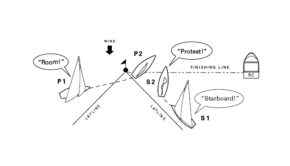
How would you decide this? →
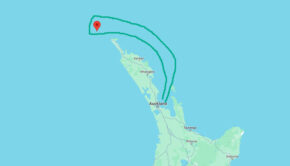
When entrants face extreme weather →

Clarisse Crémer innocent of charges →
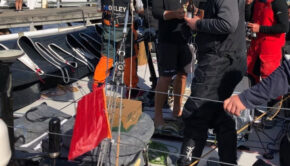
When yelling “Protest” is the right thing to do →
© 2024 Scuttlebutt Sailing News. Inbox Communications, Inc. All Rights Reserved. made by VSSL Agency .
- Privacy Statement
- Advertise With Us
Get Your Sailing News Fix!
Your download by email.
- Your Name...
- Your Email... *
- Email This field is for validation purposes and should be left unchanged.

- Election 2024
- Entertainment
- Newsletters
- Photography
- Personal Finance
- AP Investigations
- AP Buyline Personal Finance
- AP Buyline Shopping
- Press Releases
- Israel-Hamas War
- Russia-Ukraine War
- Global elections
- Asia Pacific
- Latin America
- Middle East
- Election Results
- Delegate Tracker
- AP & Elections
- Auto Racing
- 2024 Paris Olympic Games
- Movie reviews
- Book reviews
- Personal finance
- Financial Markets
- Business Highlights
- Financial wellness
- Artificial Intelligence
- Social Media
‘They tortured us': Rohingya survivors of fatal capsize say captain raped girls, purposely sank boat
Aboard a small fishing boat, Rohingya refugees faced abuse and other horrors. (AP Illustration/Peter Hamlin)
- Copy Link copied
N, a 12-year-old ethnic Rohingya refugee identified by The Associated Press with only an initial, because she is a sexual assault survivor, stands in her tent at a temporary shelter in Meulaboh, Indonesia, on Thursday, April 4, 2024. N was among 75 people rescued from atop an overturned fishing boat off the Indonesian coast in March. Dozens of other Rohingya refugees died. (AP Photo/Reza Saifullah)
Members of Indonesia’s National Search and Rescue Agency scan the horizon during the search for a capsized boat carrying Rohingya refugees off West Aceh, Indonesia, on Thursday, March 21, 2024. The wooden fishing boat carried about 140 Rohingya refugees, but only 75 people were rescued. In interviews with The Associated Press, eight of the survivors described abuses on board the fishing boat. (AP Photo/Reza Saifullah)
Ethnic Rohingya refugees stand on their capsized boat as rescuers throw a rope to them off West Aceh, Indonesia, on Thursday, March 21, 2024. The wooden fishing boat carried about 140 Rohingya refugees, but only 75 people were rescued. In interviews with The Associated Press, eight of the survivors described abuses on board. (AP Photo/Reza Saifullah)
Ethnic Rohingya refugees climb onto a National Search and Rescue Agency boat after their boat capsized off West Aceh, Indonesia, on Thursday, March 21, 2024. The wooden fishing boat carried about 140 Rohingya refugees, but only 75 people were rescued. In interviews with The Associated Press, eight of the survivors described abuses on board the fishing boat. (AP Photo/Reza Saifullah)
Ethnic Rohingya refugees board a National Search and Rescue Agency ship after being rescued from their capsized boat in the waters off West Aceh, Indonesia, on Thursday, March 21, 2024. The wooden fishing boat carried about 140 Rohingya refugees, but only 75 people were rescued. In interviews with The Associated Press, eight of the survivors described abuses on board the fishing boat. (AP Photo/Reza Saifullah)
Members of Indonesia’s National Search and Rescue Agency give instructions to Rohingya refugees rescued from a capsized fishing boat off West Aceh, Indonesia, on Thursday, March 21, 2024. The wooden fishing boat carried about 140 Rohingya refugees, but only 75 people were rescued. In interviews with The Associated Press, eight of the survivors described abuses on board the fishing boat. (AP Photo/Reza Saifullah)
Rohingya refugees rest on the deck of a National Search and Rescue Agency ship, after being rescued from their capsized boat off West Aceh, Indonesia, on Thursday, March 21, 2024. The wooden fishing boat carried about 140 Rohingya refugees, but only 75 people were rescued. In interviews with The Associated Press, eight of the survivors described abuses on board the fishing boat. (AP Photo/Reza Saifullah)
An illustrated map showing a general boat route. The Rohingya refugees left from Teknaf, Bangladesh, and their small boat eventually capsized off Indonesia. (AP Illustration)
Rescuers recover the body of a Rohingya refugee from the waters off Meulaboh, Indonesia, on Saturday, March 23, 2024. The bodies of 12 women and three children were recovered following the capsize of a boat that was carrying around 140 Rohingya refugees, according to the United Nations High Commissioner for Refugees. Sixty-seven people were killed in the disaster. (AP Photo/Reza Saifullah)
Rescuers carry the body of a Rohingya refugee recovered from the sea off Meulaboh, Indonesia, on Saturday, March 23, 2024. The bodies of 12 women and three children were recovered following the capsize of a boat that was carrying around 140 Rohingya refugees, according to the United Nations High Commissioner for Refugees. Sixty-seven people were killed in the disaster. (AP Photo/Reza Saifullah)
Rescuers bury the body of a Rohingya refugee recovered from the sea in Meulaboh, Indonesia, on Sunday, March 24, 2024. The bodies of 12 women and three children were recovered following the capsize of a boat that was carrying around 140 Rohingya refugees, according to the United Nations High Commissioner for Refugees. Sixty-seven people were killed in the disaster. (AP Photo/Reza Saifullah)
Rahena Begum, third from left, a survivor of a capsized refugee boat, sits with other ethnic Rohingya women at their temporary shelter in Meulaboh, Indonesia, on Thursday, April 4, 2024. In March, Indonesian officials and local fishermen rescued 75 people from atop the overturned hull of the boat. Dozens of other Rohingya refugees died. (AP Photo/Reza Saifullah)
Samira, a Rohingya survivor of a capsized refugee boat, uses a mirror inside a tent at a temporary shelter in Meulaboh, Indonesia, on Wednesday, April 3, 2024. She was among 75 people rescued from atop the overturned hull of the boat, which capsized off Indonesia’s coast in March. Dozens of other Rohingya refugees died. (AP Photo/Reza Saifullah)
Fatima Khatun, a Rohingya survivor of a capsized refugee boat, cries as she calls her son in Bangladesh from a temporary shelter in Meulaboh, Indonesia, on Wednesday, April 3, 2024. Fatima was among 75 people rescued in March from atop the overturned hull of the boat. Dozens of others, including Fatima’s 8-year-old daughter, died. (AP Photo/Reza Saifullah)
N, a 12-year-old ethnic Rohingya refugee identified by The Associated Press with only an initial, because she is a sexual assault survivor, speaks during an interview at her temporary shelter in Meulaboh, Indonesia, on Tuesday, April 2, 2024. N described how the captain and crew of a fishing boat that eventually capsized off the Indonesian coast abused her and three others. (AP Photo/Reza Saifullah)
Umar Faruq, a 9-year-old ethnic Rohingya refugee who survived a boat capsize, arranges tamarind seeds in the shape of a heart at a temporary shelter in Meulaboh, Indonesia, on Wednesday, April 3, 2024. Umar was among 75 people rescued in March from atop the overturned hull of the boat, which capsized off Indonesia’s coast. Dozens of other Rohingya refugees, including at least 28 children, died. (AP Photo/Reza Saifullah)
N, a 12-year-old ethnic Rohingya refugee identified by The Associated Press with only an initial, because she is a sexual assault survivor, holds a coconut ahead of breaking her Ramadan fast at a temporary shelter in Meulaboh, Indonesia, on Wednesday, April 3, 2024. N was forced to leave behind her family when she fled Bangladesh on a boat packed with other Rohingya refugees. She hoped to make it to Malaysia, where she’d been promised as a child bride to a man she’d never met. (AP Photo/Reza Saifullah)
Rohingya women sleep in their tent at a temporary shelter in Meulaboh, Indonesia, on Wednesday, April 3, 2024. They were among 75 people rescued in March from atop the overturned hull of a boat, which capsized off the Indonesian coast. Dozens of other Rohingya refugees died. (AP Photo/Reza Saifullah)
Fatima Khatun, a Rohingya survivor of a capsized refugee boat, cleans her temporary shelter in Meulaboh, Indonesia, on Wednesday, April 3, 2024. Fatima was among 75 people rescued in March from atop the overturned hull of the boat, which capsized off Indonesia’s coast. Dozens of others, including Fatima’s 8-year-old daughter, died. (AP Photo/Reza Saifullah)
Bashir Ahmed, a Rohingya survivor of a capsized refugee boat, reads the Quran at his temporary shelter in Meulaboh, Indonesia, on Thursday, April 4, 2024. Bashir was among 75 people rescued from atop the overturned hull of the boat, which capsized off Indonesia’s coast in March. Dozens of others died. (AP Photo/Reza Saifullah)
Jannat Ullah, a Rohingya survivor of a capsized refugee boat, washes his face at a temporary shelter in Meulaboh, Indonesia, on Thursday, April 4, 2024. Jannat was among 75 people rescued from atop the overturned hull of the boat, which capsized off Indonesia’s coast in March. Dozens of others died. (AP Photo/Reza Saifullah)
Fatima Khatun, a Rohingya survivor of a capsized refugee boat, poses for a photograph inside her tent in Meulaboh, Indonesia, on Thursday, April 4, 2024. Fatima was among 75 people rescued in March from atop the overturned hull of the boat. Dozens of others, including Fatima’s 8-year-old daughter, died. (AP Photo/Reza Saifullah)
Rohingya refugee Rahena Begum, right, and her 13-year-old son, Noor Shahed, pose for a photograph at a temporary shelter in Meulaboh, Indonesia, on Thursday, April 4, 2024. They were among 75 people rescued in March from atop the overturned hull of a boat that capsized off Indonesia’s coast. Dozens of others, including Rahena’s 9-year-old daughter and 12-year-old son, died. (AP Photo/Reza Saifullah)
Samira, left, and her husband, Akram Ullah, both ethnic Rohingya refugees, pose for a photograph at a temporary shelter in Meulaboh, Indonesia, on Thursday, April 4, 2024. They were among 75 people rescued in March from atop the overturned hull of a boat that capsized off Indonesia’s coast. Dozens of other Rohingya refugees died. (AP Photo/Reza Saifullah)
N, a 12-year-old ethnic Rohingya refugee identified by The Associated Press with only an initial, because she is a sexual assault survivor, stands in front of her tent at a temporary shelter in Meulaboh, Indonesia, on Wednesday, April 3, 2024. N was among 75 people rescued from atop an overturned fishing boat off the coast of Indonesia in March. Dozens of other Rohingya refugees died. (AP Photo/Reza Saifullah)
Aboard the boat, those who were abused attempted to hide among fellow refugees. (AP Illustration/Peter Hamlin)
Passengers who were drowning tried desperately to pull themselves to safety. (AP Illustration/Peter Hamlin)
MEULABOH, Indonesia (AP) — The boat glided across waters that were dark and still, under a night sky that was cloudless and calm. But on board, the 12-year-old girl quaked with fear.
The captain and crew who she says had tortured her and three other women and girls were not finished. And the punishment for disobedience, the men warned, would be death.
It was the third night that the girl and around 140 other ethnic Rohingya refugees had been trapped on the wooden fishing boat, floating off the coast of Indonesia. These children, women and men had fled Bangladesh and their homeland of Myanmar in a bid to escape violence and terror, only to face the same horrors with a crew that seemed to delight in their dread.
Huddled among the other women and girls, the 12-year-old — identified in this story only by the initial N, because she is a sexual assault survivor — tried to hide her face. She had already survived a night in the captain’s bedroom, where she says he and several crew members had beaten and sexually abused her.
N, a 12-year-old ethnic Rohingya refugee identified by The Associated Press with only an initial, because she is a sexual assault survivor, stands in her tent at a temporary shelter in Meulaboh, Indonesia, on Thursday, April 4, 2024. (AP Photo/Reza Saifullah)
Like most of the passengers, she had survived attacks by Myanmar’s military that forced her and her family to flee to neighboring Bangladesh. There, she had survived nearly seven years in violence-plagued refugee camps. And she had thus far survived this journey without her family, who hoped she’d make it to Malaysia, where she was promised as a child bride to a man she had never met.
Her young life had been one long battle to survive. And so, it seemed, this night would be no different.
The captain was in a rage. He ordered more girls to join him and his crew in the bedroom.
No one budged.
“If you don’t come to us,” the captain shouted, “then we will capsize this boat!”
What happened next would force N and the other Rohingya on board into yet another battle for survival.
For many, this would be the battle they finally lost.
In March, Indonesian officials and local fishermen rescued 75 people from atop the overturned hull of a boat off the coast of Indonesia’s northern province of Aceh. Another 67 passengers, including at least 28 children, had been killed when the boat capsized, according to the United Nations High Commissioner for Refugees.
Ethnic Rohingya refugees stand on their capsized boat as rescuers throw a rope to them off West Aceh, Indonesia, on Thursday, March 21, 2024. (AP Photo/Reza Saifullah)
Until now, little was known about how the boat capsized, or why. This account, as told to The Associated Press in separate interviews with eight surviving passengers, provides the first insight into what happened on board and why so many died. The men, women and children interviewed include witnesses of the events leading to the capsize and of the sexual abuse, as well as the only surviving sexual assault victim, N.
The disaster is the latest in a string of tragedies to befall the Rohingya, a stateless Muslim minority that suffered mass slaughter at the hands of Myanmar’s military in 2017 in what the United States has dubbed a genocide . Over the past two years, the Rohingya have increasingly fled Bangladesh’s refugee camps, where gang violence and hunger has surged, and Myanmar, where a bloody conflict between the ruling military junta and ethnic rebel groups has escalated. Muslim-majority Malaysia, which the Rohingya view as relatively safe, is the preferred destination.
The results of this mass exodus have been catastrophic . Last year, 4,500 Rohingya — two-thirds of them women and children — fled Myanmar and Bangladesh by boat, the UNHCR reported. Of those, 569 died or went missing while crossing the Bay of Bengal and Andaman Sea, the highest annual death toll since 2014.
International indifference toward the Rohingya has, in many ways, worsened the crisis. In several cases, coastal countries in Asia have ignored pleas to rescue imperiled Rohingya boats , despite international laws mandating the rescue of boats in distress. Global donations for the nearly 1 million Rohingya languishing in overcrowded camps have plummeted, leading to slashed food rations . And no country is offering large-scale resettlement.
Most Rohingya understand the risks of taking to the sea. But those who board the vessels say the world has left them with little choice.
And so it was that N arrived one night in March at a remote beach in southern Bangladesh, where she climbed into a small fishing boat that would take her away from everything she knew, including her family.
Like an increasing number of underage Rohingya girls , she had been promised as a wife to a man in Malaysia she’d spoken to only by phone. These marriages are rooted in desperation: Many parents in the camps can no longer feed their children or afford the traditional dowry demanded by grooms. The men in Malaysia forfeit dowries and often send money to the brides’ parents.
The fishing boat ferried N and her fellow passengers to a larger boat, which took them deeper into the Bay of Bengal. One day later, they were moved again to an even bigger boat, with a crew from Myanmar.
For around a week, they slid seamlessly through the sea. The crew was kind, providing enough food and water. The children had space to play. The waves were placid. For Rahena Begum, traveling with her 9-year-old daughter and 12- and 13-year-old sons, it almost felt too easy.
Until suddenly, it wasn’t.
The captain told those on board the plan had changed. They would need to transfer everyone to an Indonesian fishing boat, with a crew who would take them the rest of the way to Indonesia. From there, the passengers would be smuggled into neighboring Malaysia. Though the captain gave no reason for the switch, the recent surge in Rohingya arrivals has put Indonesian authorities on alert for boats from Bangladesh and Myanmar.
The sight of the rickety Indonesian vessel sent a chill through the passengers. Muhammed Amin, who had fished the waters off Bangladesh for years and spent countless hours on boats, estimated the Indonesian vessel was built to accommodate, at most, 60 people — not 140.
But the Myanmar captain and crew, he says, reassured him the boat was safe and that it would reach Indonesia in one day.
Reluctantly, Amin, N, Rahena and the others climbed into the Indonesian vessel. The Myanmar boat soon disappeared into the distance.
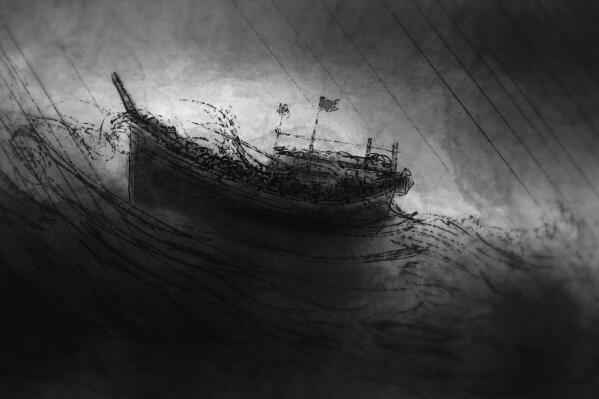
Almost immediately, the Indonesian captain and crew separated the men from the women.
The men were forced into the boat’s cramped, stifling cargo holds, one of which was beneath the captain’s bedroom. Anyone who protested was beaten, Amin says.
The captain and crew turned to the women and girls, but they did not speak Indonesian and could not understand their demands.
A few Rohingya men who spoke the language were allowed out of the hold to translate. When the women understood what the captain wanted, they began to cry.
The men told the crew to leave the women alone. The crew beat them, and then beat the women.
Samira, left, and her husband, Akram Ullah, both ethnic Rohingya refugees, pose for a photograph at a temporary shelter in Meulaboh, Indonesia, on Thursday, April 4, 2024. (AP Photo/Reza Saifullah)
Seventeen-year-old Samira, whose husband was stuck in the hold, became an early target. The captain and crew repeatedly ordered her into the bedroom. A relative of Samira’s, Fatima Khatun, told the tearful teen to say she was sick, and used hand signals to explain to the captain that Samira was married. The crew moved on.
N, however, had no one to protect her. And she quickly caught the captain’s attention.
She was a child stuck in the middle of the ocean, facing a group of men who warned they were armed, though no one ever saw a gun.
She had no choice.
And so, N and four other women and girls entered the bedroom.
It wasn’t long before the stillness of the night was shattered by their screams.
Through her terror, N struggled to make sense of what was happening, then struggled to make it stop. But inside the room, there was no pity, only pain.
One of the women managed to slip out, but N and the others were trapped. Two of the girls were teenagers, and the third around 20, N estimated. All were in tears.
The abuse by the captain and five of his six crew members lasted all night, N says. Attempts to fight back were met with beatings.
From the cargo hold below the bedroom, the men could hear the cries. Those who dared to climb onto the deck could see the abuse unfolding through the room’s windows. But believing the crew was armed, they say, they were powerless to stop them.
When morning finally dawned, N spotted a man she knew and signaled to him for help. He approached the room and was beaten by the crew but persuaded the captain to let N out to use the toilet. She hid among the other women and hoped the captain was finished with her.
He was, at least for the moment. But he and the crew were not done with the other three girls, whose assaults continued for a second night.
In the sweltering hold, 19-year-old Jannat Ullah’s yearning for fresh air grew so intense he risked climbing on deck. When he emerged, he says, he looked through the bedroom window and saw the captain raping one of the teens. A crew member spotted Jannat and slapped his head until he retreated. But later, Jannat says, he watched through a gap in the wall as another crew member raped the same girl.
The sun was rising again, along with the passengers’ desperation. The crew had given them no water and only tiny portions of rice, noodles and eggs. They wondered how much longer they could last.
Fatima Khatun, sitting next to the captain’s room with her 8-year-old daughter, Ruma, had witnessed the abuse of the girls inside and could bear no more. She signaled through the window to the girls to come out.
At last, that night, they did, emerging sobbing and speechless. Fatima and Samira told them to cover themselves with hijabs and tried to hide them.
It was then that the captain and crew began demanding fresh victims.
The women and girls refused. The crew kicked and punched them. The women wept but stood their ground.
The captain and crew had been drinking alcohol and smoking marijuana, the passengers told the AP. The captain was growing angrier.
“If you don’t come into the room, I will capsize this boat!” he thundered, again and again.
Samira told herself he must be joking.
Fatima Khatun, a Rohingya survivor of a capsized refugee boat, poses for a photograph inside her tent in Meulaboh, Indonesia, on Thursday, April 4, 2024. (AP Photo/Reza Saifullah)
It was around 9 p.m. and many of the children had fallen asleep, oblivious to the chaos. As Fatima fretted over the captain’s threats, daughter Ruma slumbered against her arm.
Fed up with the hold, Amin and Jannat had come up on deck. The captain, Amin says, looked drunk, his body wobbly. The captain went to the toilet and then headed to the helm.
Which is when, Jannat says, he saw the captain push the steering wheel with his leg.
The vessel tilted violently, sending passengers tumbling. And then it smashed into a wave.
In the blackness of the water, people screamed for salvation, for God, for their children.
“RUMA!” Fatima cried, searching wildly for her daughter, who had been ripped away when the boat overturned. “RUMA!”
Fatima fought to stay afloat, but the water was swallowing her as fast as she was swallowing the water.
Suddenly, hands closed around her arm and yanked upwards. Passengers who had climbed on top of the overturned hull were pulling her to safety.
She screamed and screamed for her little girl. But Ruma was gone.
Jannat could hear his 7-year-old cousin, Futika, shouting from somewhere inside the boat. Frantic, the teen swam back into the vessel and spotted Futika wedged with others inside the cargo hold. Jannat tried to yank him free, again and again. But it was futile. Jannat swam out, clambered onto the hull and wept.
Those who were drowning desperately clutched at others struggling in a sea that was fast becoming a graveyard. Among the dying were mothers and fathers, sisters and brothers, a 3-year-old boy and his parents.
Scores of passengers found themselves trapped under heavy fishing nets that ensnared them when the boat overturned. Women wailed for help that did not come.
N battled her way through the throngs until she made it onto the hull. Once again, she had managed to survive.
But the three girls who were abused alongside her in the captain’s bedroom had not, their battered bodies disappearing into the depths.
In the water, Rahena Begum spotted her 9-year-old daughter, Rema, but her two sons were nowhere to be seen. Other passengers pushed Rahena and Rema onto the hull, then began to pump the unresponsive child’s chest and water-swollen stomach. Suddenly, Rema’s hand moved, and she sputtered a few words.
Rahena pulled her daughter into her lap and cuddled her. Her baby was alive, at least for now. So was her 13-year-old son, who’d also made it onto the hull. But her 12-year-old boy, Noor Aziz, was missing. She would never see him again.
Amin knew they had to keep the vessel stable if they had any hope of surviving. He ordered the men to stand on the corners of the hull, to try to balance the weight.
In March, Indonesian officials and local fishermen rescued 75 people from atop the overturned hull of a boat off the coast of Indonesia’s northern province of Aceh. Another 67 passengers, including at least 28 children, had been killed when the boat capsized, according to the United Nations High Commissioner for Refugees. Until now, little was known about how the boat capsized, or why. (AP Video/Edna Tarigan)
The crew, meanwhile, wanted to be anywhere but the boat. Amin spotted the captain and three crew members swimming away, using water jugs as flotation devices. The remaining three crew tried to follow them, but Amin and the other men held them back, forcing them to stay on the hull. Amin feared that if rescuers found them on the boat without a crew, the passengers would be blamed for the disaster.
Hours passed, and those on the hull waited for a miracle. In the morning, it seemed to arrive, in the form of another fishing boat. Scores of passengers leaped into the water and swam toward it. But the fishing boat was tiny and could not hold them all. The crew allowed six people on board, then headed for shore.
The waves had worsened, and passengers’ frantic attempts to flee the overturned boat had left the vessel unstable. It capsized again.
Rahena found herself back in the water, fighting once more to save her daughter. She spotted Rema slipping below the surface and grabbed her, before other passengers pushed the pair back onto the hull.
Rohingya refugee Rahena Begum, right, and her 13-year-old son, Noor Shahed, pose for a photograph at a temporary shelter in Meulaboh, Indonesia, on Thursday, April 4, 2024. (AP Photo/Reza Saifullah)
But Rema had grown delirious. She tried to bite people and could not speak. Rahena knew her daughter was in urgent need of help.
Others never made it back on board. Samira’s husband, Akram Ullah, estimates at least 20 drowned when the boat overturned the second time.
The subsequent capsize had knocked loose the remains of passengers who had drowned inside the vessel the night before. Jannat spotted the lifeless body of his little cousin, Futika, bobbing in the waves.
More fishing boats arrived, and passengers called out for help. But those on board the vessels simply shot photos and videos of them, then left.
A few passengers tried to swim to shore, promising to send help if they made it. They were never seen again. And help still did not come.
But, at least, the rain did.
The passengers, weak with thirst, collected what they could in a tarp and shared sips of it, thanking Allah for sparing their lives.
Yet as another night passed, it was clear not everyone would be spared. Rahena’s daughter, cradled in her lap, had gone still. Rahena hugged her little girl and tried to talk to her. But the life had drained from her daughter.
The passengers prayed for the child, then slid her body into the sea.
Around 30 minutes later, Rahena says, the rescue ship finally arrived.
Ethnic Rohingya refugees board a National Search and Rescue Agency ship after being rescued from their capsized boat in the waters off West Aceh, Indonesia, on Thursday, March 21, 2024. (AP Photo/Reza Saifullah)
In the days following the disaster, the bodies of 12 women and three children were recovered from the waters off Aceh, according to the UNHCR. The search for more has been called off.
Although the fishing boat’s crew rescued the initial six people from the hull the morning of March 20, search and rescue vessels were not launched until later that evening. Officials finally spotted the boat around 9 a.m. March 21, about 22 kilometers (14 miles) offshore, and finished evacuating all the passengers from the hull around midday.
Ibnu Harris Al Hussain, chief of Banda Aceh’s search and rescue agency, said the rescue operation began shortly after his agency learned about the capsized boat. He also said officials needed time to coordinate a plan to care for survivors once they reached land, while crews at sea initially kept their distance out of fear the passengers would hurt themselves trying to swim to the rescue boat.
“The most important thing is that we have ensured their safety when they were found,” Hussain wrote to the AP.
On April 2, police announced they had arrested three members of the crew, plus a fourth man who was not on board the boat. They were charged with people smuggling, which carries a maximum sentence of 15 years in prison. Police are still searching for the remaining crew, including the captain, whose mobile phone activity places him in Malaysia, West Aceh Police Chief Andi Kirana told the AP.
Police are not considering murder charges, Kirana says, because they believe the capsize was an accident — the result of an overcrowded boat simply taking on too much water.
But N and the other passengers believe the disaster was a deliberate act of revenge by a sadistic captain and crew who thought they could escape. And for that — and for all the suffering endured — the punishment, N says, should fit the crime.
They tortured us. They treated us like animals,” she says. “We want the government to treat them like animals.”
Rohingya women sleep in their tent at a temporary shelter in Meulaboh, Indonesia, on Wednesday, April 3, 2024. (AP Photo/Reza Saifullah)
Kirana also said police are not considering rape charges, because they haven’t received any reports of sexual assault. But N says police have never questioned her about what happened on board.
For now, she and the other passengers remain in limbo, sleeping under tents behind a government office building. They have been shifted between shelters amid protests by locals who want them to go away. But there is nowhere for them to go.
Though they have survived so much, some wonder what it was all for.
Rahena questions why she was spared, when two of her children were not. Her husband, already in Malaysia, blames her for attempting the journey and for the death of their daughter and son.
“I lost my hope when I lost my children,” Rahena says. “I feel like I have nothing.”
N, alone and aching for her mother, hopes to somehow make it to Malaysia and to the man who wants her as his wife.
Maybe then, she says, she will finally be free — though in reality, Rohingya child brides in Malaysia often become prisoners to abusive husbands.
For now, all she can do is fight to survive another day and pray for a future free of pain.
“I don’t want to suffer anymore,” she says.
Gelineau reported from Sydney.


What should you do if your boat capsizes?
Tips to help you avoid capsizing
Being properly prepared in case your boat capsizes
What to do when your boat has capsized.
For most people who enjoy boating, regardless of experience level, the idea of capsizing is a frightening one. And yet, sticking our heads in the sand and pretending it's not a risk, or isn't going to happen, is neither wise nor responsible. While applying good seamanship will limit the possibility of a capsize happening, there are situations where it may be outside our control and in such instances, knowledge and sufficient planning may just be the difference between life and death.
So what should you do if you find yourself in this situation to minimise damage and keep everyone, including yourself, as safe as possible? We've put together a list of tips which cover proper planning, both in order to avoid capsizing in the first place and also so you are prepared in the event it does happen, as well as step-by-step instructions you should follow in the event the worst should happen.
Tips to help you avoid capsizing
Don't overload the boat.
One of the cardinal rules of boating is not to overload the boat. This means that you should not carry too much weight onboard or in any one concentrated area. An overloaded boat is much more at risk of capsizing so it's best to do your due diligence beforehand to ensure you understand the boat you are going out on and its limitations.
Distribute boat contents evenly for greater stability
Distribute the boat's contents evenly throughout the vessel to create greater stability and reduce the chance of the boat flipping over. This can be done by putting heavier items at the bottom of the boat and lighter items on top as well as ensuring they are evenly spread out from front to back and port to starboard.
Turn the boat at a controlled speed(s)
If possible avoid tacking or jibing suddenly. If you do it's possible that your passengers won't be prepared to maneover which could lead to a loss of control. Take broader turns where possible and ensure the crew is fully aware of what you're doing.
Never anchor from the stern
When you drop your anchor from the stern of your boat, the chain attached to the anchor can cause your boat to swing into the wind and it may roll over and capsize as a result. Even if your boat doesn't capsize the anchor can pull the stern of your boat into the water and cause water to seep into it (this is known as swamping).
Be alert for the wake and waves of other boats
When you are out on the open water, be aware of the wake and waves created by other vessels. Boat wake and waves can be dangerous, especially if you are not expecting them. Be sure to keep a safe distance, secure items properly before getting underway and be prepared for "chop" caused by other vessels.
Monitor the forecast before heading out to be aware of changing sea conditions
Check the weather conditions before you set out such as the wind and tide schedule and look ahead to see how the conditions are expected to change over the course of the day. Make sure you are familiar with the route you are taking and do your best to be aware of your surroundings.
Wear appropriate clothing and footwear and remember - if you are in doubt, don't go out!

Ensure the correct safety equipment is on board
- Ensure the boat is in good condition before you set sail and make sure you are familiar with the boat's capabilities
- Be sure to have enough fuel, drinking water, and food for the journey
- Double-check that you have a life jacket for each person on board
- Pack a first aid kit and check beforehand in case any items need replacing or topping up.
- Have a flare gun and flares to go with it.
- Ensure you have a working VHF radio
- Always carry up-to-date charts
- Make sure you have a working fire extinguisher onboard
Pro tip: Keep an accessible grab bag on board with things like flares, your first aid kit and a registered Emergency Position Indicating Radio Beacon (EPIRB) and passports. This is essential should you need to exit in a hurry.

Make sure everyone is accounted for
The first thing you should do after your boat has capsized is perform a quick head count and make sure everyone is together. Once you have ensured no one is missing overboard begin to give clear instructions.
Use the boat for support
All crew, including yourself, should board the boat or at least get as much of their body out of the water as possible to avoid wasting energy and getting hypothermia. Heat is lost much more quickly through water than the air and treading water will cause the body to use valuable energy supplies.
Signal for help
Once you have ensured all passengers are together and everyone is at least partially out of the water you can then call for help. If you have access to your VHF send out a Mayday distress call. If your EPIRB is kept in a bag and not set to automatically activate you should trigger it immediately.
Attempt to right the boat
Depending on the size of the vessel it may be possible to right it yourself. If you are sailing a dinghy turn the boat so that the Mast is downwind or the bow is pointed into the Wind. The first person should stand on the centerboard, while the second crew member keeps the boat into the Wind. From the Stern, the first person then boards the boat and helps the other crew member onboard. If you are on a dinghy ensure the main and jib sheet is eased so your boat doesn't take off as soon as you right it.
Do not panic and swim away from the vessel!
Whatever happens, it is really important you do not attempt to swim away from the boat unless you are drifting towards something hazardous. A ship is a much bigger object and provides better floatation which is therefore much easier to find for a rescue team. In addition, as long as it floats you can hold on to it and preserve energy. If anyone tries to move away from the boat or the group communicate this information to them calmly but firmly.
For more information check out
- Boat safety magazine
- Boat-ed's what to do if you capsize
- Ace Boater's emergency situations tips
savvy navvy , the boating app that brings all essential marine information together in one place. Featuring global charts, wind and weather forecasts, tidal graphs, GPS Tracking, automatic weather routing, and marina and anchorage information. It’s like Google Maps for boats.
Inspired to get on the water? Start your free trial today.
Latest Articles.
7-day greece cruising itinerary.
Imagine crystal blue waters with so much depth you can drop anchor right off the shoreline, calm flat waters that are almost mirror-like in reflection and Instagram-perfect flamingo floating sceneries. You would be forgiven for thinking I’m talking
How to Read A Nautical Chart Depth? A Step-by-Step Guide
Reading the depth on a nautical chart depth can be challenging for a beginner boater. However, with a step-by-step guide, it can be easy to get to grips with.
How to Calculate Nautical Miles On A Chart? All You Need to Know
Distances at sea are measured in nautical miles which are different to land miles. To measure distance on nautical charts, you will need a nautical ruler or dividers, which are specifically designed for use with charts. Calculating nautical miles on
Two dead and five missing following a boat collision on Danube River in Hungary
Two people are dead and five are missing following a boat collision on the Danube River in Hungary.
Hungarian police received a report late on Saturday night, local time, that a man had been found bleeding from his head on the shore of the Danube near the town of Verőce, around 50 kilometres north of the capital, Budapest.
The bodies of a man and a woman were later discovered nearby.
Hours after police began their search, they discovered a damaged boat in the water, which they towed to shore.
They are still searching for five adults — three men and two women — who they believe were on the boat.
Police said they had determined that a river cruise boat had been in the area at the time of the accident.
They stopped a cruise boat with a damaged hull near the town of Komarom, more than 80 kilometres further upriver.
Hungarian public television station M1 reported that the cruise boat, Heidelberg, is a 109-metre Swiss craft that can accommodate 110 people.
No passengers on that boat sustained injuries, M1 said.
The Danube at Verőce is roughly 460 metres wide and is in the centre of an area called the Danube Bend where the river makes a sweeping, nearly 90-degree turn to the south.
The area is a popular recreational and boating destination and is on a route often used by cruise boats between Budapest and the Austrian capital, Vienna, some 230 kilometres upriver.
The deadly accident comes five years after at least 27 people were killed in Budapest when a river cruise boat collided with a smaller tourist vessel, sinking it in seconds.
The tourist boat Hableany, carrying 35 people who were mostly South Korean tourists, was overtaken from behind by the much larger cruise boat, Viking Sigyn, beneath Budapest's Margit Bridge, in May 2019.
The Ukrainian captain of the Viking Sigyn was found guilty in 2023 of negligence leading to a fatal mass catastrophe and sentenced to five years and six months in prison.
He has appealed the decision.
On Sunday police said they have initiated criminal proceedings against an unknown perpetrator on suspicion of endangering water transport and causing the death of several people.
Disaster response units, including 95 personnel, 25 vessels and drones were still searching for the five missing people along the entire Hungarian section of the Danube downstream from the site, police said in a statement.
- X (formerly Twitter)
- Death and Dying
- Maritime Accidents and Incidents
- Motorcycles
- Car of the Month
- Destinations
- Men’s Fashion
- Watch Collector
- Art & Collectibles
- Vacation Homes
- Celebrity Homes
- New Construction
- Home Design
- Electronics
- Fine Dining
- Les Marquables de Martell
- Mira Villas
- Panther National
- Reynolds Lake Oconee
- Wynn Las Vegas
- 672 Wine Club
- Sports & Leisure
- Health & Wellness
- Best of the Best
- The Ultimate Gift Guide
Killer Whales Sunk a 50-Foot Sailing Yacht in the Strait of Gibraltar
It's just the latest in a string of orca attacks on sailboats., tori latham, tori latham's most recent stories.
- There Are Now More People Worth Over $100 Billion Than Ever
- This 29-Carat Harry Winston Diamond Ring Could Fetch Nearly $2 Million at Auction
- This Florida Fine Dining Restaurant Garnished Dishes With Ferns That Dogs May Have Peed On
- Share This Article

Two sailors had a whale of a time over the weekend—but only in the technical sense.
Related Stories
- Tesla’s Cybertruck Inspired This New Solar-Powered Trailer
- McLaren Just Unveiled the World’s Most Powerful Street-Legal E-Bikes
- This New 164-Foot Superyacht Will Use Methanol Fuel Cells to Produce Emissions-Free Power
“This was a scary moment,” the skipper Jelmer van Beek said at the time. “Three orcas came straight at us and started hitting the rudders. Impressive to see the orcas, beautiful animals, but also a dangerous moment for us as a team.”

While that attack didn’t result in the sinking of the ship, another sailing yacht sank near the Tanger Med port in November, The New York Times wrote. The crew of that ship had to abandon the boat after a group of orcas slammed into the rudder for a whole 45 minutes. (The whales have seemingly been targeting sailboats in particular.)
Researchers don’t know for sure why the whales have been attacking boats, but they think it may be one of the ways the orcas play, the Times said—a pretty dangerous form of amusement, albeit. Others have theorized that it’s a short-term fad among the animals, or that one orca experienced a traumatic event that made it aggressive and other whales began to mimic that behavior. The incidents have become so common in recent years that sailors trade advice online about how to maneuver in the Strait of Gibraltar area, and the Spanish government issued a release that included tips for sailors.
Tori Latham is a digital staff writer at Robb Report. She was previously a copy editor at The Atlantic, and has written for publications including The Cut and The Hollywood Reporter. When not…
Read More On:
- Sailing Yacht
More Marine

This New 131-Foot Superyacht Concept Brings High Architecture to the High Seas

ISA Unveils a Trio of Sleek New Superyachts

Wider Yachts Is Debuting a 92-Foot Hybrid Catamaran at the Venice Boat Show—Here’s a First Look

This New 394-Foot Custom Superyacht Will Be the Largest Amels Yet

Culinary Masters 2024
MAY 17 - 19 Join us for extraordinary meals from the nation’s brightest culinary minds.
Give the Gift of Luxury
Latest Galleries in Marine

K Superyacht in Photos

Meet ‘Home,’ the Sleek 164-Foot Superyacht That Starred in ‘Below Deck’
More from our brands, max mara resort 2025 show’s location revealed – and it doesn’t get more venetian than this, no a’s in attendance: oakland trails a whopping 553 u.s. teams, ‘the crown’-inspired drama about iran’s last royal family in development at random access media (exclusive), artist joseph awuah-darko accuses kehinde wiley of sexual assault, the best yoga mats for any practice, according to instructors.
- India Today
- Business Today
- Reader’s Digest
- Harper's Bazaar
- Brides Today
- Cosmopolitan
- Aaj Tak Campus
- India Today Hindi
Two missing after boat capsizes in Bihar's Maner, search ops underway
A boat capsized in river ganges in patna when several labourers had gone to fetch fodder, police said..
Listen to Story

- Boat carrying farmers capsizes in river Ganges in Patna
- Two people missing, others swam to reach shore
- Search operation underway to locate those missing
At least two people went missing while the rest swam to the shore after a boat carrying a dozen of labourers capsized in the Ganges in Bihar's Patna, police said on Sunday.
The labourers had gone to fetch fodder, when the tragedy befell them.
- Share full article
Advertisement
Supported by
Orcas Sink Another Boat Near Iberia, Worrying Sailors Before Summer
Two people were rescued on Sunday after orcas damaged their boat near the Strait of Gibraltar, where the animals have caused havoc in recent years.

By Isabella Kwai
Summer is on the way, meaning that the orcas are out to play near the Strait of Gibraltar — which is bad news for sailors.
Two people were rescued on Sunday after an attack by a group of orcas caused enough damage to sink their boat, according to the Spanish maritime rescue service. It was the fifth such sinking in waters off the Iberian Peninsula and North Africa in recent years.
The Alboran Cognac, a sailing yacht about 50 feet long, was approached by the animals on Sunday morning, some 14 miles off Cape Spartel in Morocco, the rescue service said. Crew members onboard reported that the animals had slammed the hull, damaged the rudder and caused a leak.
A nearby oil tanker quickly maneuvered toward the boat and evacuated the two sailors, who were taken to Gibraltar, the rescue service said. The boat was left adrift, and the Moroccan authorities reported that it eventually sank.
It’s the first boat to sink in those waters this year after an orca-related mishap. A group of orcas that traverse the Strait of Gibraltar and nearby waters has plagued sailors and intrigued marine biologists , who are studying the population. Since 2020, orcas have disrupted dozens of sailing journeys in these high-traffic waters, in some cases slamming vessels hard enough to cause critical damage.
Last November, orcas slammed a yacht’s rudder for 45 minutes, causing its crew to abandon the vessel, which sank near the Tanger Med port.
The group is more likely to appear in the busy lanes around the Gulf of Cadiz and the Strait of Gibraltar between April and August, the Spanish government said in a news release, and sailors have spotted some of the orcas there in recent weeks.
Researchers do not know why the pod is targeting boats, but they have theorized that the behavior is a form of play for the curious apex predators. The interactions have become so frequent that they are now a multinational issue, involving scientists and officials from Spain, Portugal and Morocco. Online, anxious sailors have gathered to share advice on navigating “orca alley,” and biologists are tracking the orcas’ movements and testing methods that could deter them.
In the event of an orca encounter, the government advised in its release, boats should not stop but instead head toward shallower waters near the coast.
But the number of incidents may be declining: Researchers at the Atlantic Orca Working Group said on Monday that the number of orca interactions with boats between January and May had dropped some 40 percent, compared with that of similar periods in the past three years.
Isabella Kwai is a Times reporter based in London, covering breaking news and other trends. More about Isabella Kwai
'They were lucky': 5 crew members saved from sinking mussel boat in Malpeque Harbour
New london fire department's rescue boat able to save 5 crew from sinking vessel.

Social Sharing
All the crew members of a mussel-fishing boat that ran aground off Malpeque Harbour on P.E.I.'s North Shore Monday morning were rescued by members of the local fire department after having to take refuge on the vessel's roof.
The 15-metre vessel ran aground on a sandbar and started taking on water in rough seas just after 8 a.m. Monday, said Timothy Wall, a fisherman from the area.
The New London Fire Company told CBC News there were five people aboard, all of them wearing life jackets at the time of the rescue.
The fire department's new rigid inflatable boat was able to get all five crew members off of the sinking vessel just after 9 a.m.

A spokesperson for the Canadian Coast Guard's Joint Rescue Coordination Centre in Halifax said there were no medical issues or injuries reported among the crew.
The spokesperson said the plan is to tow the boat out of the harbour sometime today.

Firefighter describes how dangerous seas complicated P.E.I. mussel boat rescue
Wall said the boat was trying to bring a load of mussels in when it struck the sandbar.
"When the boat went aground, everybody just kind of climbed on the side, then they had to climb on the roof," he said. "It's dangerous — it's rocky and it's windy and it's cold."
'The system works'
Alan Doucette, a firefighter and medical first responder with the New London department, was aboard the rescue craft. He said the water conditions and depth made it difficult for other nearby fishing boats to assist, since they would have been in danger of getting stranded as well.

RAW: Fishing boat takes on water off Malpeque Harbour
"The tide was coming in fast, the wind was in our face and the waves were really, really big. They were crashing over the boat," Doucette said.
"They were lucky, but they did everything right," he said of the crew members.
"They put their life jackets on, they got up high on the vessel, they radioed out for help, the other boats came [and] we came along. The system works."

The New London Fire Company received the rigid inflatable boat earlier this year.
Because it was available, the rescue crew was able to make it to the stranded fishermen "before things went bad," said firefighter Jonathan Gillis.
"We just had Mother's Day and the very next day we just rescued five guys — five dads, fathers, uncles, you know — and that makes a big difference in a small community like P.E.I."

Other Malpeque fishers relieved after rescued crew brought home safely

Corrections
- An earlier version of this story referred to the rescue craft as a Zodiac, a common brand name for a rigid inflatable boat. The craft is actually a Highlander-brand vessel. May 16, 2024 8:29 AM AT
ABOUT THE AUTHOR

Stephen Brun works for CBC in Charlottetown, P.E.I. Through the years he has been a writer and editor for a number of newspapers and news sites across Canada, most recently in the Atlantic region. You can reach him at [email protected].
With files from Steve Bruce
Related Stories
- 2 men dead after boat sinks on Annapolis River
- Temporary boat ban on Clear Lake needed to curb spread of zebra mussels, Parks Canada says
- Harvesters call for permanent solution to Malpeque Harbour safety concerns
Things to Do in Elektrostal, Russia - Elektrostal Attractions
Things to do in elektrostal.
- 5.0 of 5 bubbles
- 4.0 of 5 bubbles & up
- Good for a Rainy Day
- Good for Kids
- Good for Big Groups
- Adventurous
- Budget-friendly
- Hidden Gems
- Good for Couples
- Honeymoon spot
- Good for Adrenaline Seekers
- Things to do ranked using Tripadvisor data including reviews, ratings, photos, and popularity.

1. Electrostal History and Art Museum

2. Statue of Lenin

3. Park of Culture and Leisure
4. museum and exhibition center.

5. Museum of Labor Glory

7. Galereya Kino
8. viki cinema, 9. smokygrove.

10. Gandikap
11. papa lounge bar, 12. karaoke bar.

IMAGES
VIDEO
COMMENTS
Here are some Techniques in Righting a Capsized Boat: Release the mainsheet and tiller and climb towards the opposite side. Climb over the top gunwale (top edge of the side of the Hull). Step over the sidedeck to reach the Daggerboard. Stand on the part of the Daggerboard nearest to the Hull and hold the gunwale.
Why Capsizes Occur. Capsizing can take place for different reasons, including sudden gusts of wind, choppy seas, or when the captain loses command of the boat. Most often capsizes result from several factors combining forces, like abrupt changes in wind direction, unequal weight distribution among crew members, or improper sail trimming.
The Traditional Method. Hence the name; this method is the most common way to recover a capsized boat. Begin by positioning the boat, so the mast is downwind (meaning the bow is pointed into the wind). Then, have one crewman stand on the centerboard (ideally, this crewman should be the heaviest of the bunch).
Seawise University capsized after being gutted by fire in 1972. Capsizing or keeling over occurs when a boat or ship is rolled on its side or further by wave action, instability or wind force beyond the angle of positive static stability or it is upside down in the water. The act of recovering a vessel from a capsize is called righting.Capsize may result from broaching, knockdown, loss of ...
The Seacor Power, a lift boat, capsized off the coast of Louisiana in April 2021 during a storm. At the time of the incident, the boat had 19 people aboard; six were rescued, one was found dead, and 12 more went missing. The incident raised concerns about safety regulations and vessel design in the offshore energy industry.
The third major cause of a capsized vessel is bad weather, which often acts in concert with some of the factors spoken of above, such as overloading or unbalanced loads, to cause a boat to capsize. Small boats are easily overwhelmed by modest waves or even a large wake, especially if they have a large load and sit low in the water.
A boat can capsize for a variety of reasons, including strong winds, waves, improper weight distribution, or an uneven hull or center of gravity. Other causes may include an overloaded boat, a collision, or striking a submerged object. Prolonged exposure to wind, waves, and excessive speed can also cause a boat to capsize.
Here is a summary of what a sailboat capsize ratio is. A sailboat capsizes ratio is a parameter used to show whether a boat can recover from an inverted, capsized position or not. This term was mainly developed after the Fastnet race disaster. This was a 1979 race where a storm destroyed several yachts during the last day of the race, also ...
Falling in the boat. Falling in the boat changes the righting moment instantly and causes lots of capsizes. Every sailor needs to work on balance and combatting clumsiness. Falling out of the boat/missed hiking straps. Good sailors have lost regattas by missing hiking straps. Equipment failure is often to blame. Some key things to check: Loose ...
US Coast Guard rescue crews are searching for 39 people whose boat reportedly capsized on Saturday night near Fort Pierce, Florida, the agency said on Tuesday.
Boat Capsized Look for Flotation Support. When the boat capsizes, the debris on the deck may spill overboard on the water. Look around you for floating objects to improve your buoyancy. Once you're confident you're afloat, try to make the effort of righting the boat or climbing onto the hull to wait for rescue. Use Your Whistle and Wait for ...
Incorrect sail trim, excessive heeling, abrupt maneuvers, or overloading the boat can destabilize the vessel, leading to a capsize. It is essential for sailors to receive proper training and practice good seamanship.
What to do when your small boat capsizes. Capsizing is a common occurrence to any dinghy sailor. You must be familiar with the technique to pull the boat b...
Capsize - understanding the risks. A skipper should know how their boat will cope with rough seas. By working within known limits and understanding the risks, then the chances of a capsize occurring are much reduced. Safety is all about improving the odds. When considering the odds of a boat capsizing, knowing the limitations of its design ...
WATCH: USA dramatically capsizes during Bermuda's practice racing. The incident unfolded in the third practice race of the day, when the top of the wing looked to invert the wrong way. The USA F50 immediately flipped over, but luckily missed the nearby teams of Emirates GBR and New Zealand. Thankfully all athletes are accounted for, and the ...
Tips to stay safe if your boat capsizes. Everyone on board should wear a life jacket the entire time they're on the boat. Put flares, extra life jackets, and distress signals in a waterproof bag you can access if your boat capsizes. You may also want to make a float plan and keep an emergency position-indicating radio beacon (EPIRB) on board.
Surviving a Capsize. 1. Put on your life vests if they aren't already on and you have time. Clip the vest in place and pull on the hanging strips to tighten the jacket and secure it. If you don't have time to put a life vest on or you don't know how to wear it in the moment, just grab a life jacket and hold on to it.
A common situation is that a boat has capsized in a race, at least one of the crew is in the water, and there are Race Committee or coach/parent boats nearby watching the racing. Under the ...
The USA SailGP Team's boat was damaged after flipping on its side during a training race in Bermuda. 00:42 - Source: CNN. Stories worth watching 16 videos. Watch: Boat capsizes during training ...
Umar Faruq, a 9-year-old ethnic Rohingya refugee who survived a boat capsize, arranges tamarind seeds in the shape of a heart at a temporary shelter in Meulaboh, Indonesia, on Wednesday, April 3, 2024. Umar was among 75 people rescued in March from atop the overturned hull of the boat, which capsized off Indonesia's coast.
Being properly prepared in case your boat capsizes Ensure the correct safety equipment is on board. Ensure the boat is in good condition before you set sail and make sure you are familiar with the boat's capabilities; Be sure to have enough fuel, drinking water, and food for the journey; Double-check that you have a life jacket for each person ...
Hungarian public television station M1 reported that the cruise boat, Heidelberg, is a 109-metre Swiss craft that can accommodate 110 people. No passengers on that boat sustained injuries, M1 said.
A group of orcas sank a 50-foot sailing yacht in the Strait of Gibraltar, the fifth such incident in recent years. The two sailors were rescued.
Boat carrying farmers capsizes in river Ganges in Patna Two people missing, others swam to reach shore Search operation underway to locate those missing At least two people went missing while the rest swam to the shore after a boat carrying a dozen of labourers capsized in the Ganges in Bihar's ...
The Alboran Cognac, a sailing yacht about 50 feet long, was approached by the animals on Sunday morning, some 14 miles off Cape Spartel in Morocco, the rescue service said. Crew members onboard ...
All the crew members of a mussel-fishing boat that ran aground off Malpeque Harbour on P.E.I.'s North Shore Monday morning were rescued by members of the local fire department after having to take ...
Elektrostal , lit: Electric and Сталь , lit: Steel) is a city in Moscow Oblast, Russia, located 58 kilometers east of Moscow. Population: 155,196 ; 146,294 ...
Show more. 12 places sorted by traveler favorites. 1. Electrostal History and Art Museum. 19. Art Museums • History Museums. 2. Statue of Lenin. 16.
In 1938, it was granted town status. [citation needed]Administrative and municipal status. Within the framework of administrative divisions, it is incorporated as Elektrostal City Under Oblast Jurisdiction—an administrative unit with the status equal to that of the districts. As a municipal division, Elektrostal City Under Oblast Jurisdiction is incorporated as Elektrostal Urban Okrug.
Map of the Moscow Oblast. The Joseph-Volokolamsk Monastery in Volokolamsk. Flag Coat of arms. Moscow Oblast (Russian: Моско́вская о́бласть, Moskovskaya oblast) is a federal subject of Russia.It is located in western Russia, and it completely surrounds Moscow.The oblast has no capital, and oblast officials reside in Moscow or in other cities within the oblast.